Lecture 18
BST and tree traversals
MCS 275 Spring 2023
Emily Dumas
Lecture 18: BST and tree traversals
Reminders and announcements:
- Project 2 due today.
- Homework 7 available.
- Project 1 will be graded by Monday.
- It's only the manual review you're waiting on; the autograder results account for most of the project grade.
Updated BST class
I put an implementation of binary search tree (as class BST) in trees.py.
Also modified so BST() is considered a valid, empty tree. (That is, None as
a key is treated specially.)
BST.search also supports a verbose mode.
treeutil
I added a module to the datastructures directory of the sample code repository which can
generate random trees. You'll
use it in lab this week.
IntegerSet
As a sample application of BST, we can make a class that stores a set of integers, supporting membership testing and adding new elements.
Compare alternatives:
- Unsorted list - fast to insert, but slow membership test
- Sorted list - fast membership test, slow insert
Implementation Hiding
To use BST, you need to know about and work with Node objects.
In contrast, IntegerSet has an interface based directly on the values to be stored. It
hides the fact that its implementation uses a BST.
Walking a tree
Back to discussing binary trees (not necessarily BST).
For some purposes we need to visit every node in a tree and perform some action on them.
To do this is to traverse or walk the tree.
Named traversals
The three most-often used recursive traversals:
- preorder - Node, left subtree, then right subtree.
- postorder - Left subtree, right subtree, then node.
- inorder - Left subtree, node, then right subtree.
Note: They all visit left child before right child.
Preorder traversal
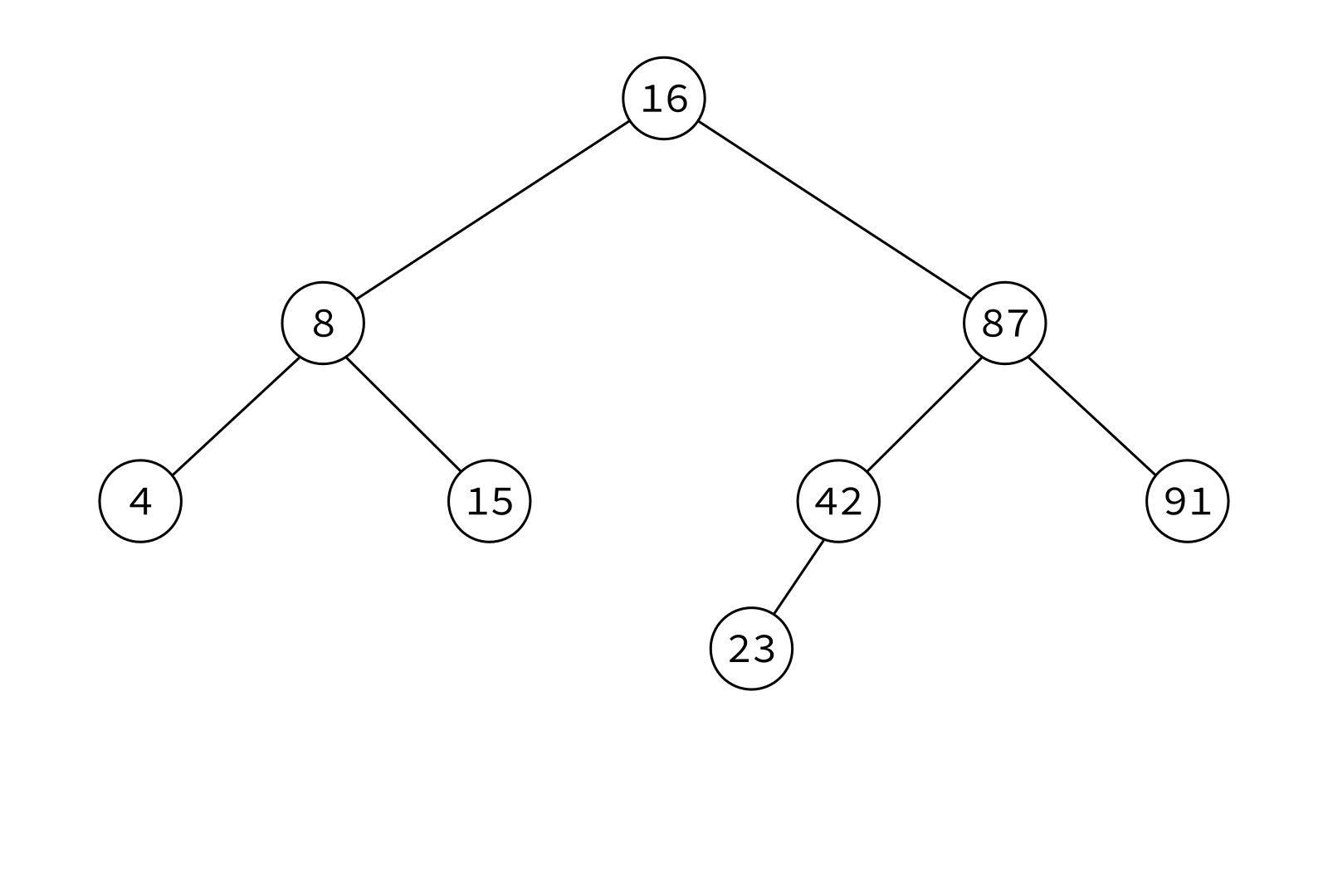
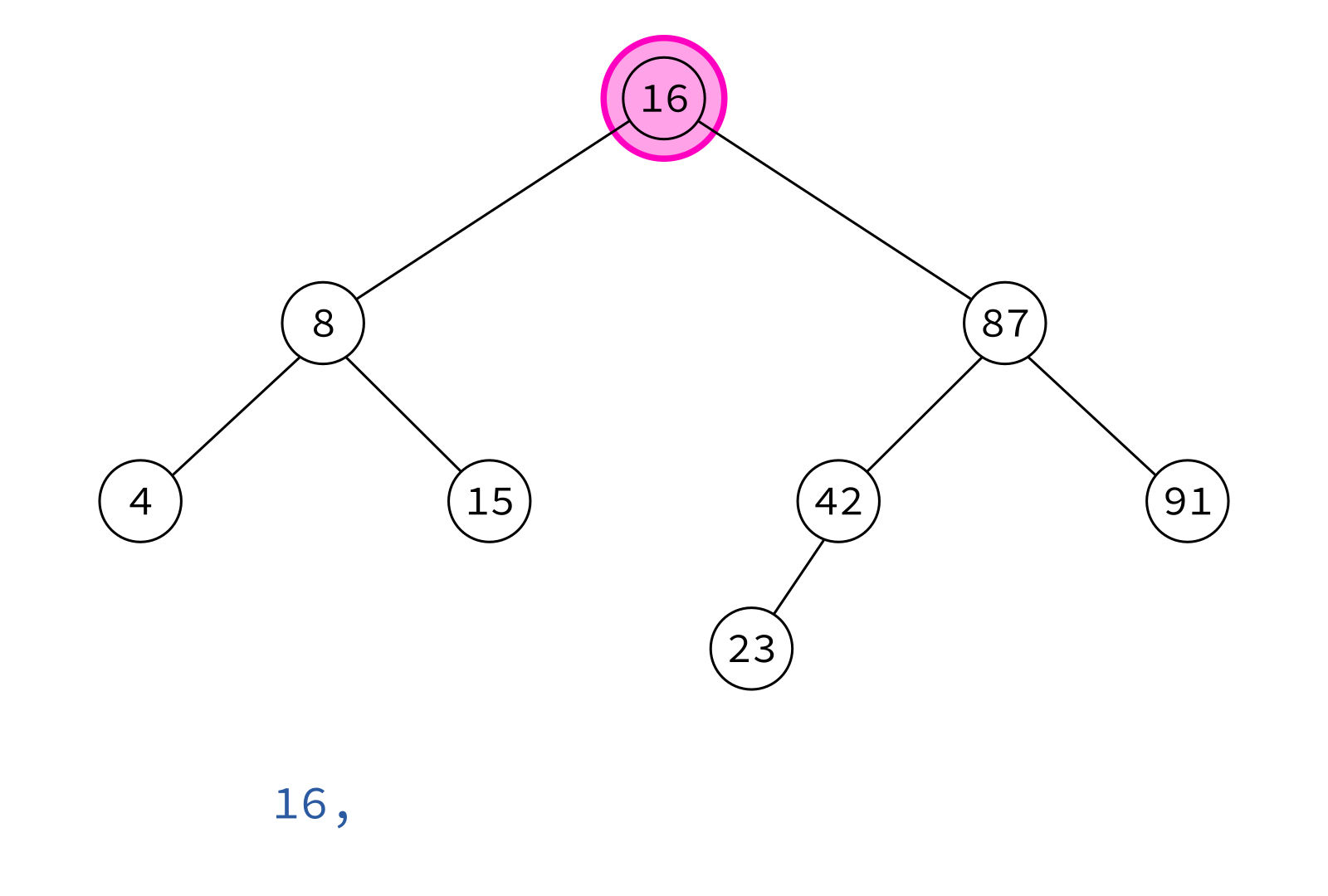
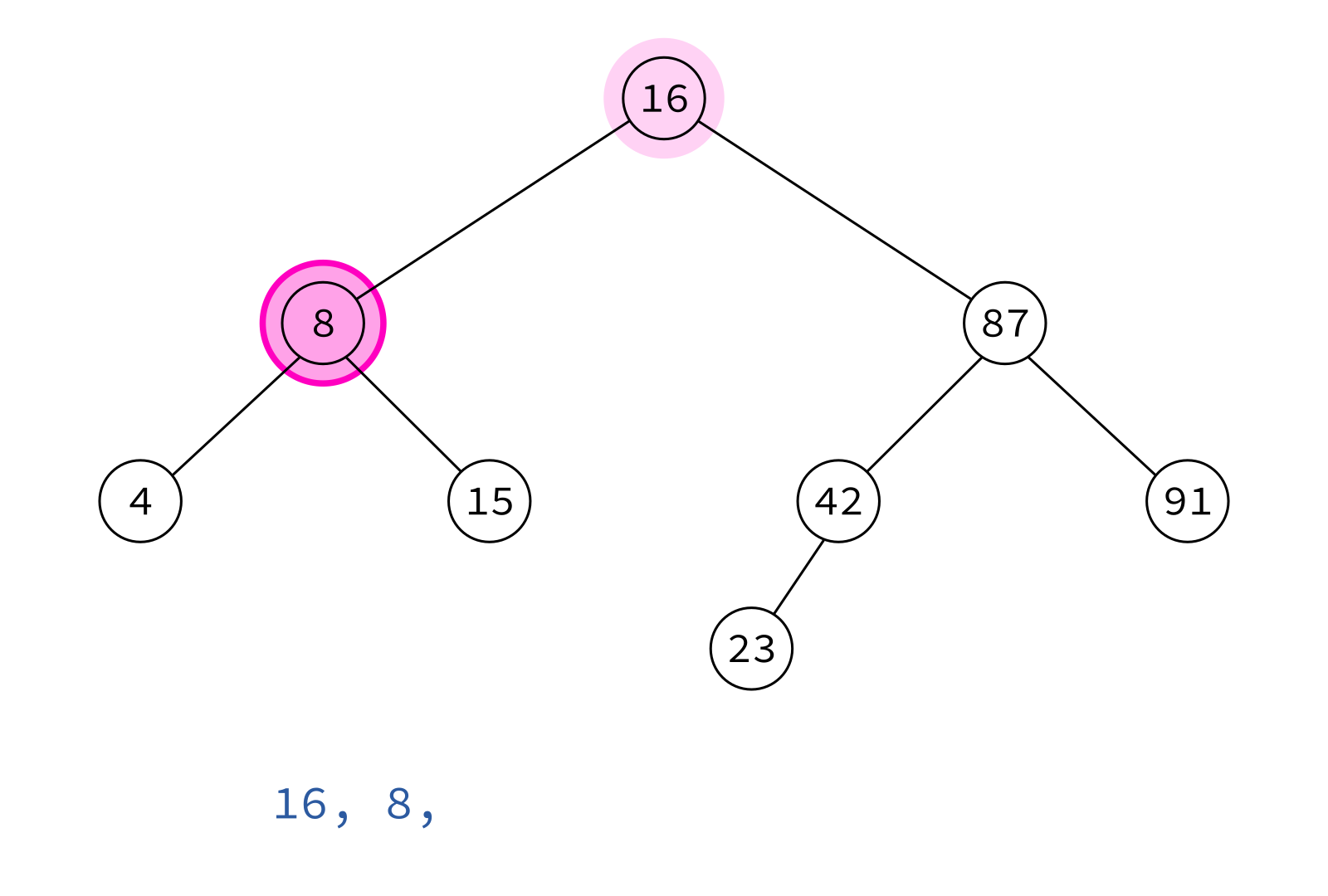
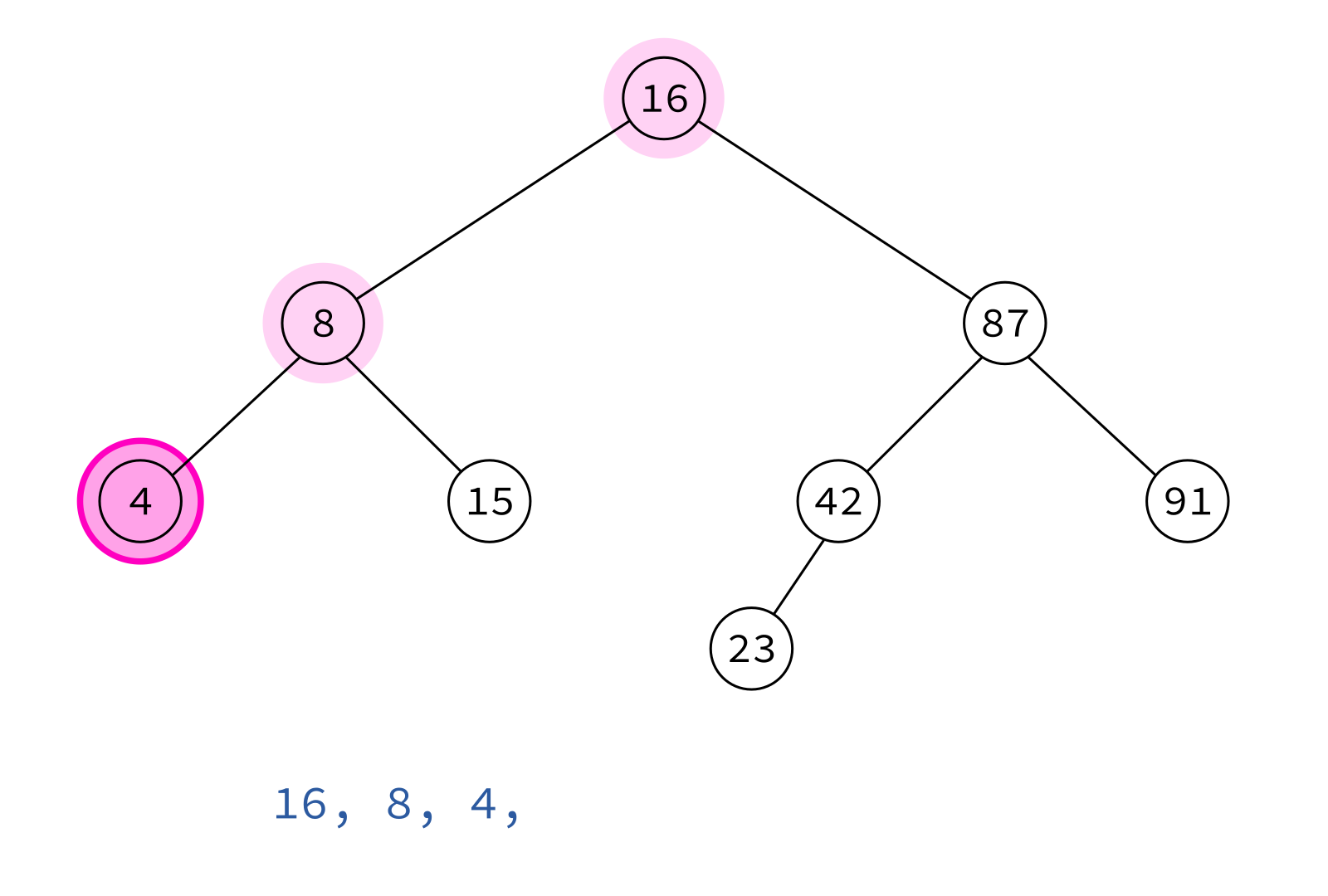
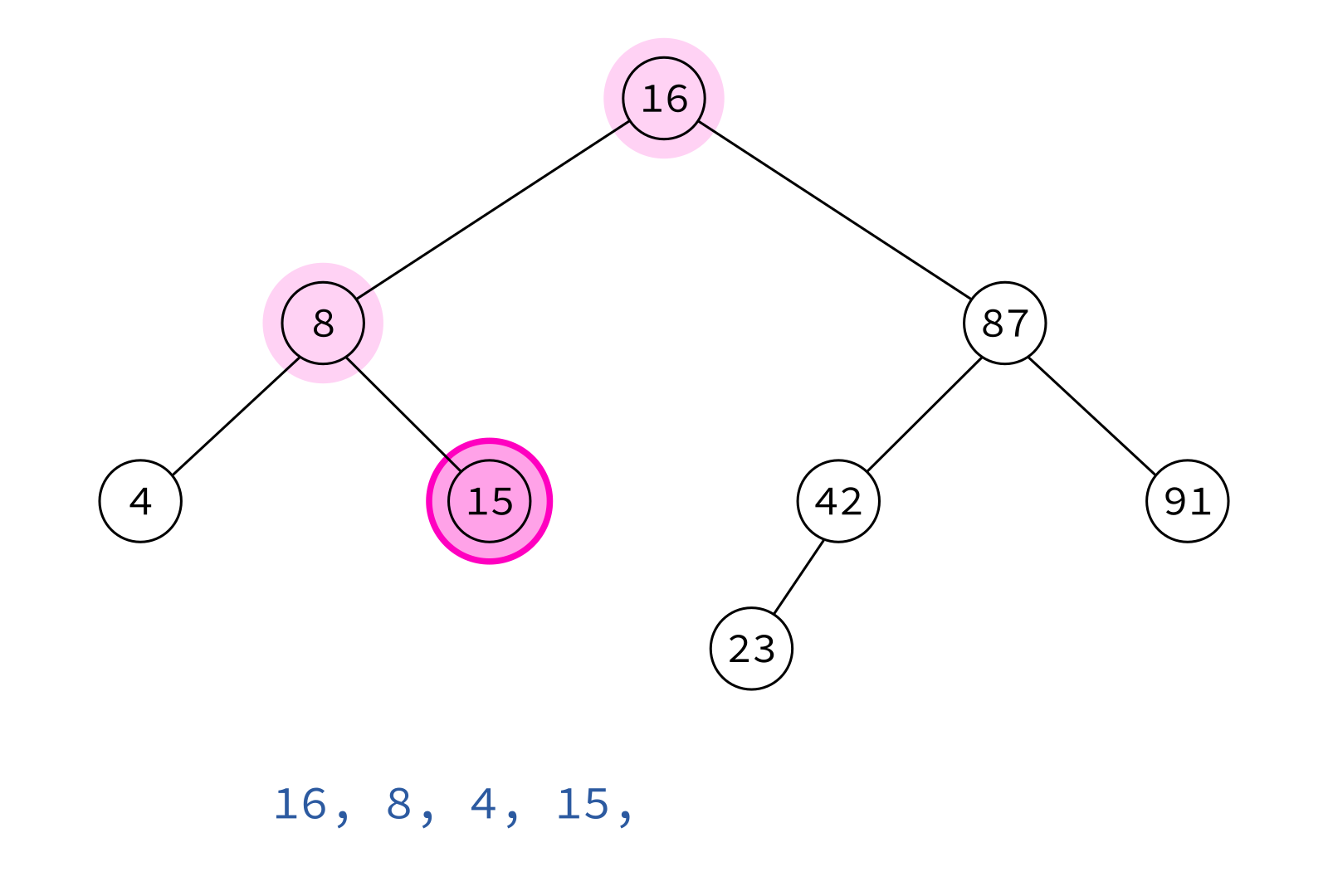
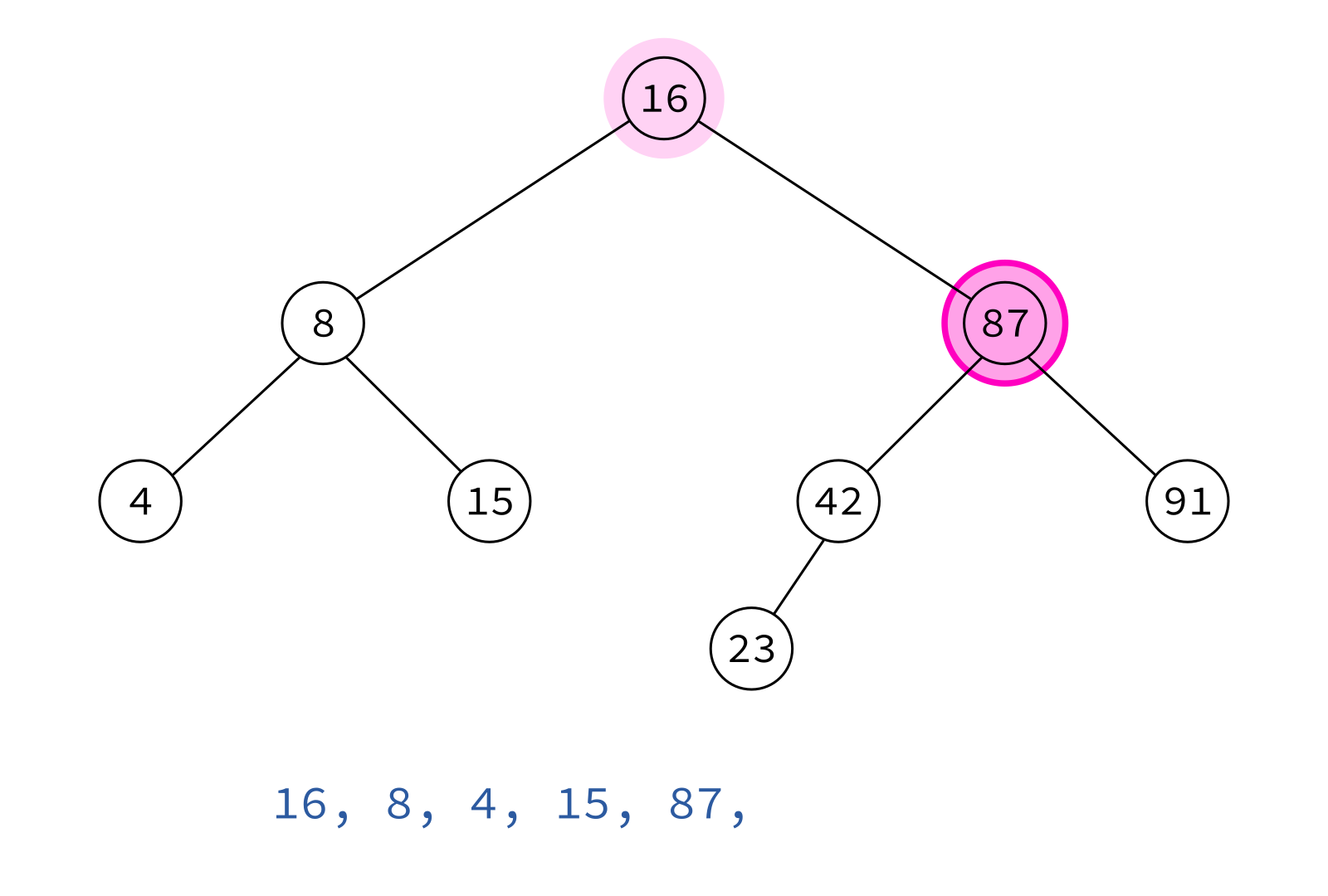
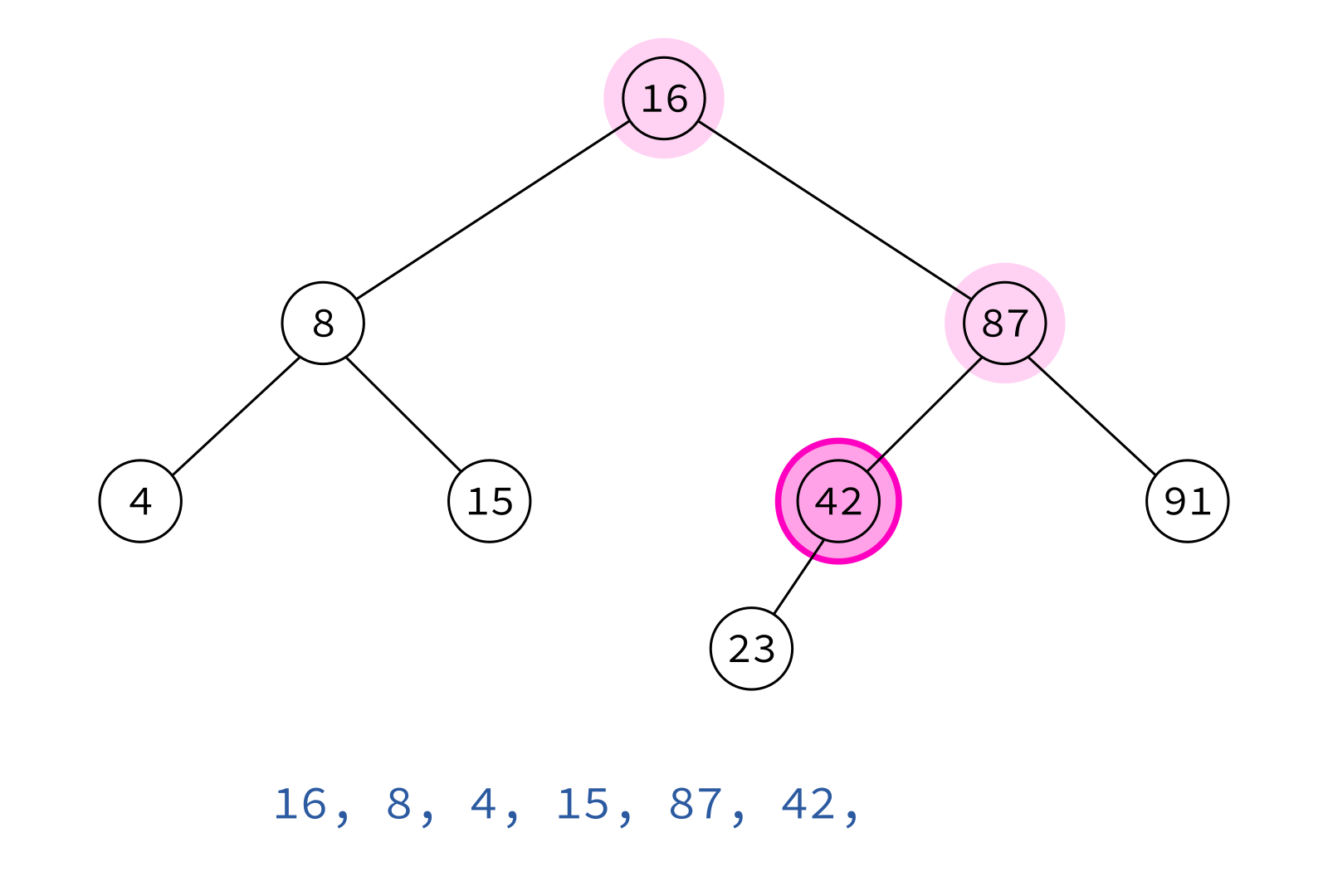
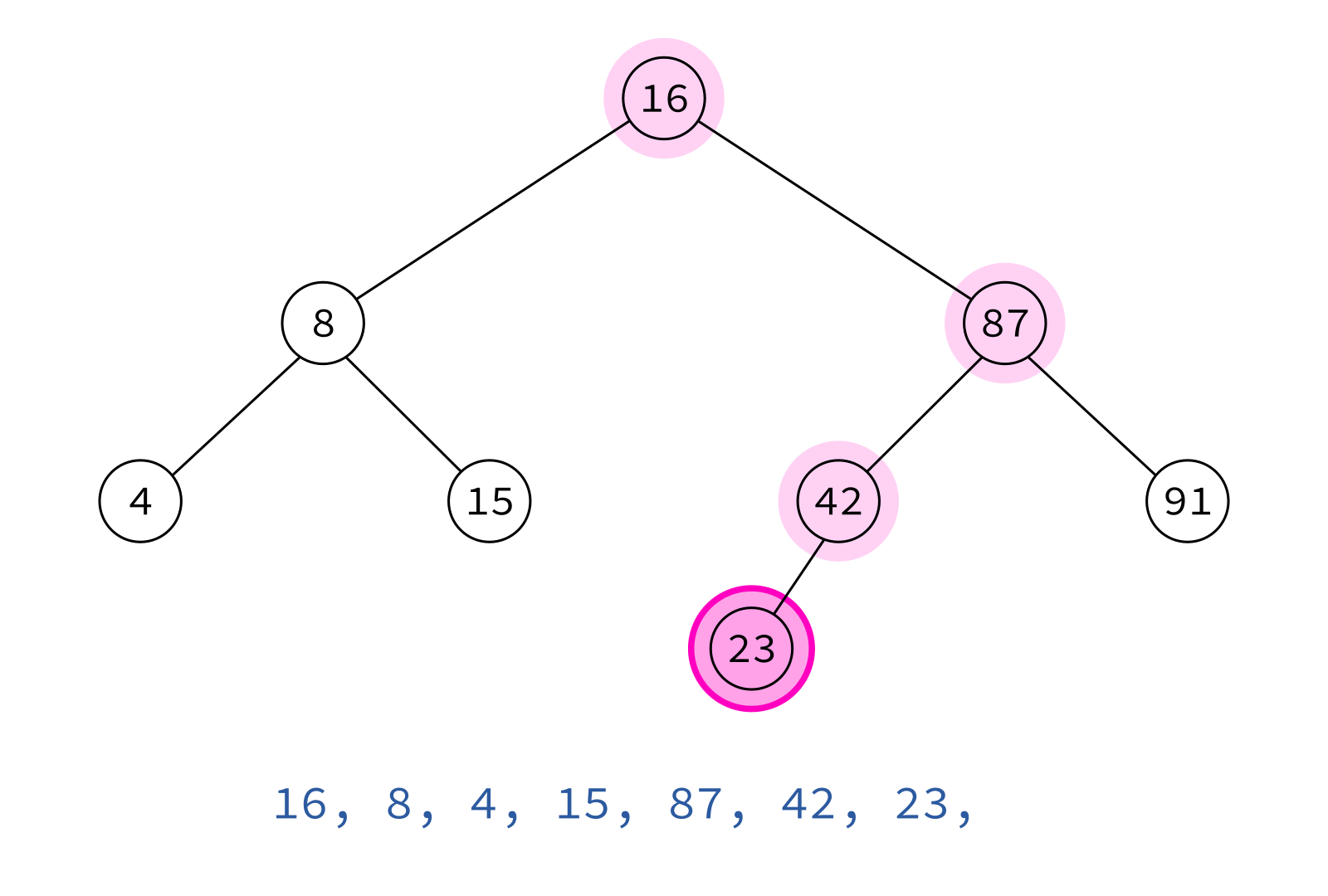
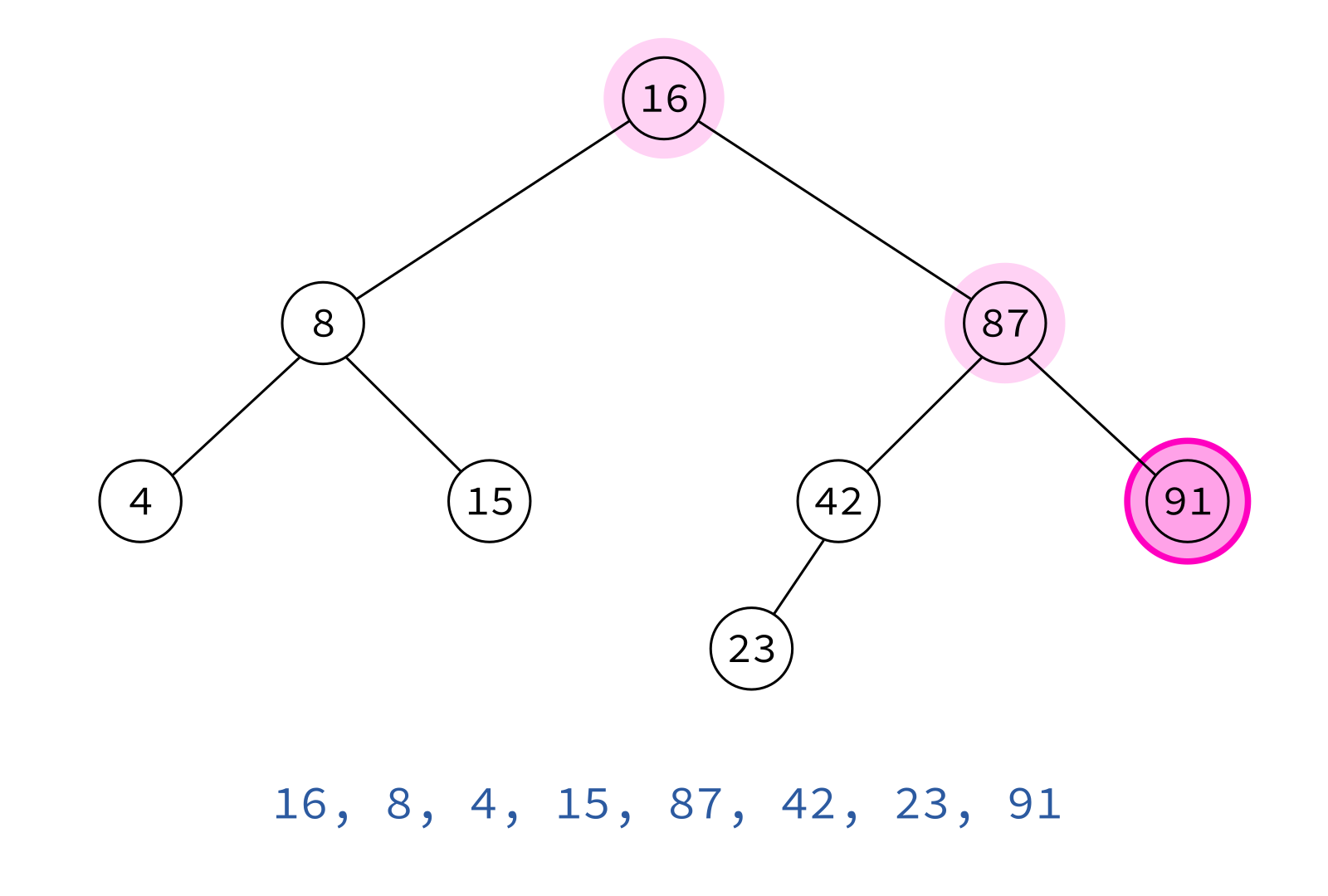
node, left, right
Preorder traversal
Typical use: Make a copy of the tree.
Insert the keys into an empty BST in this order to recreate the original tree.
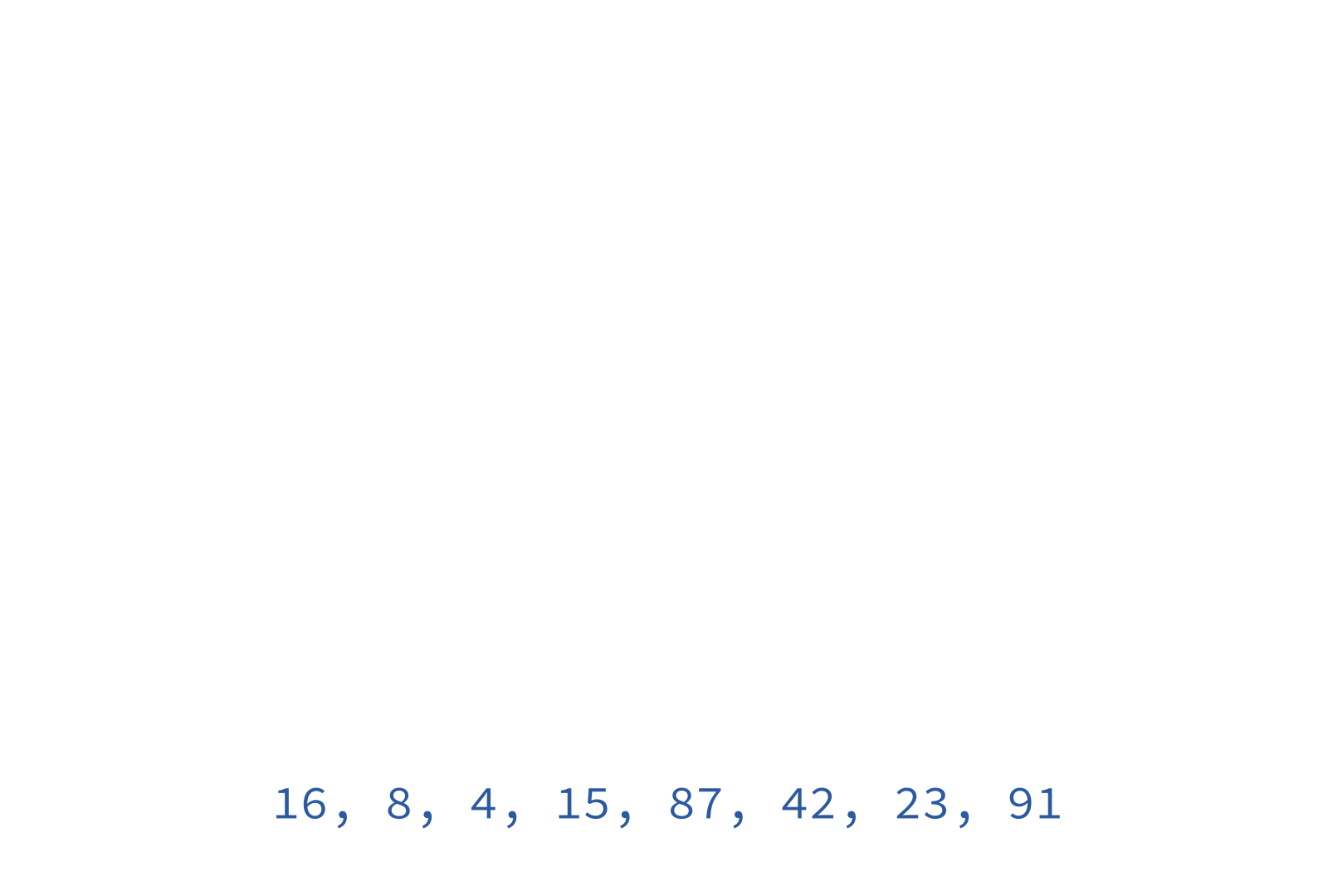
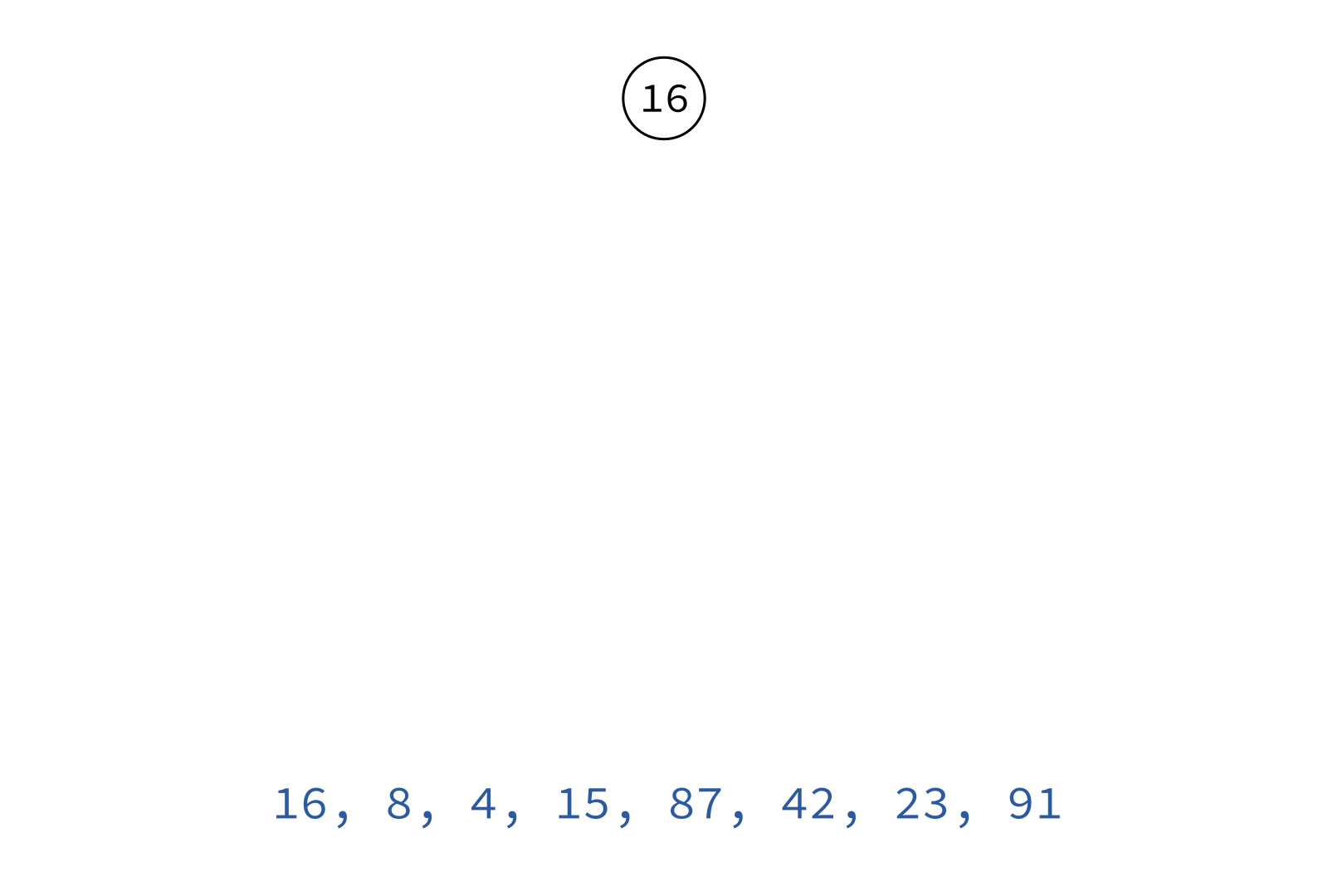
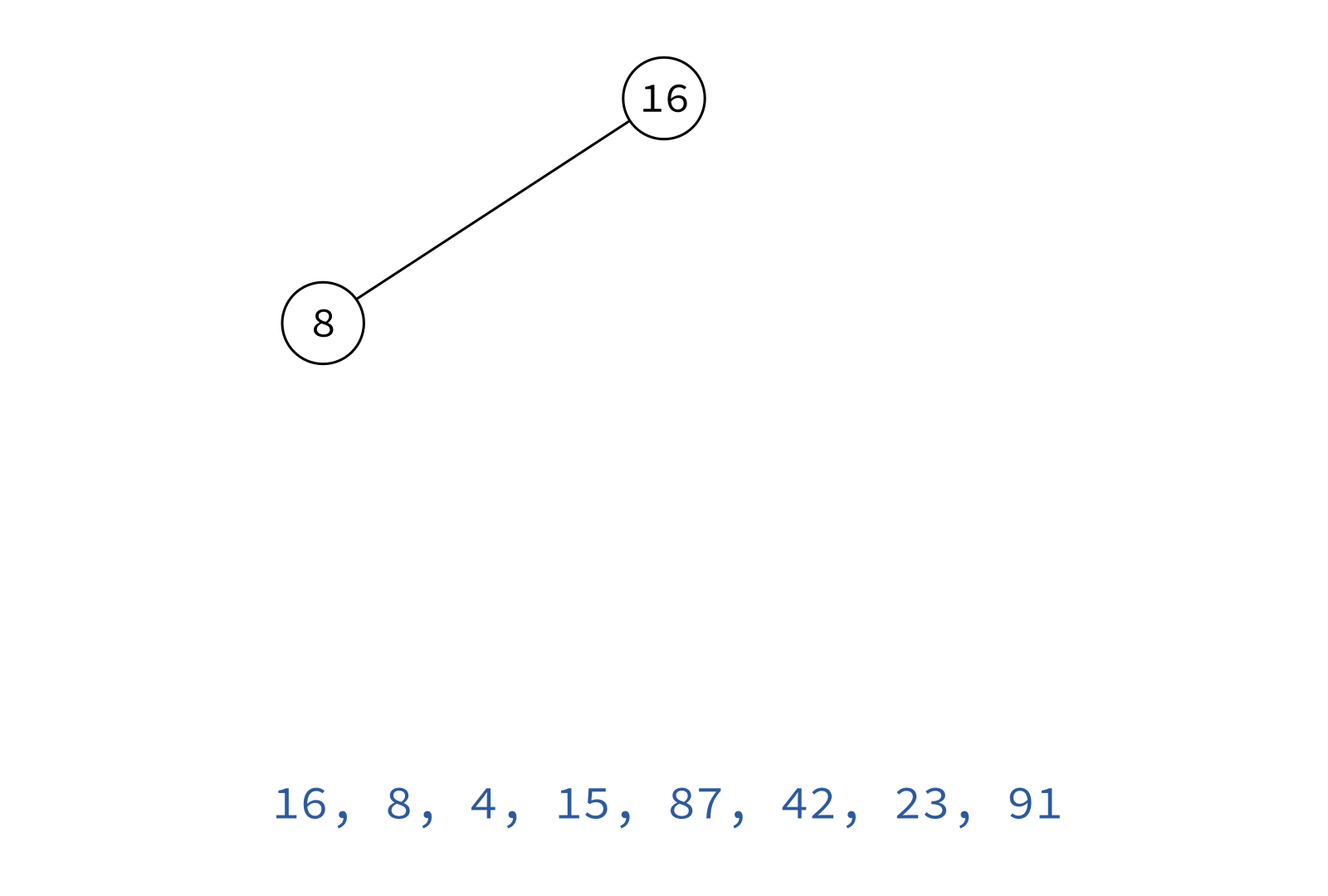
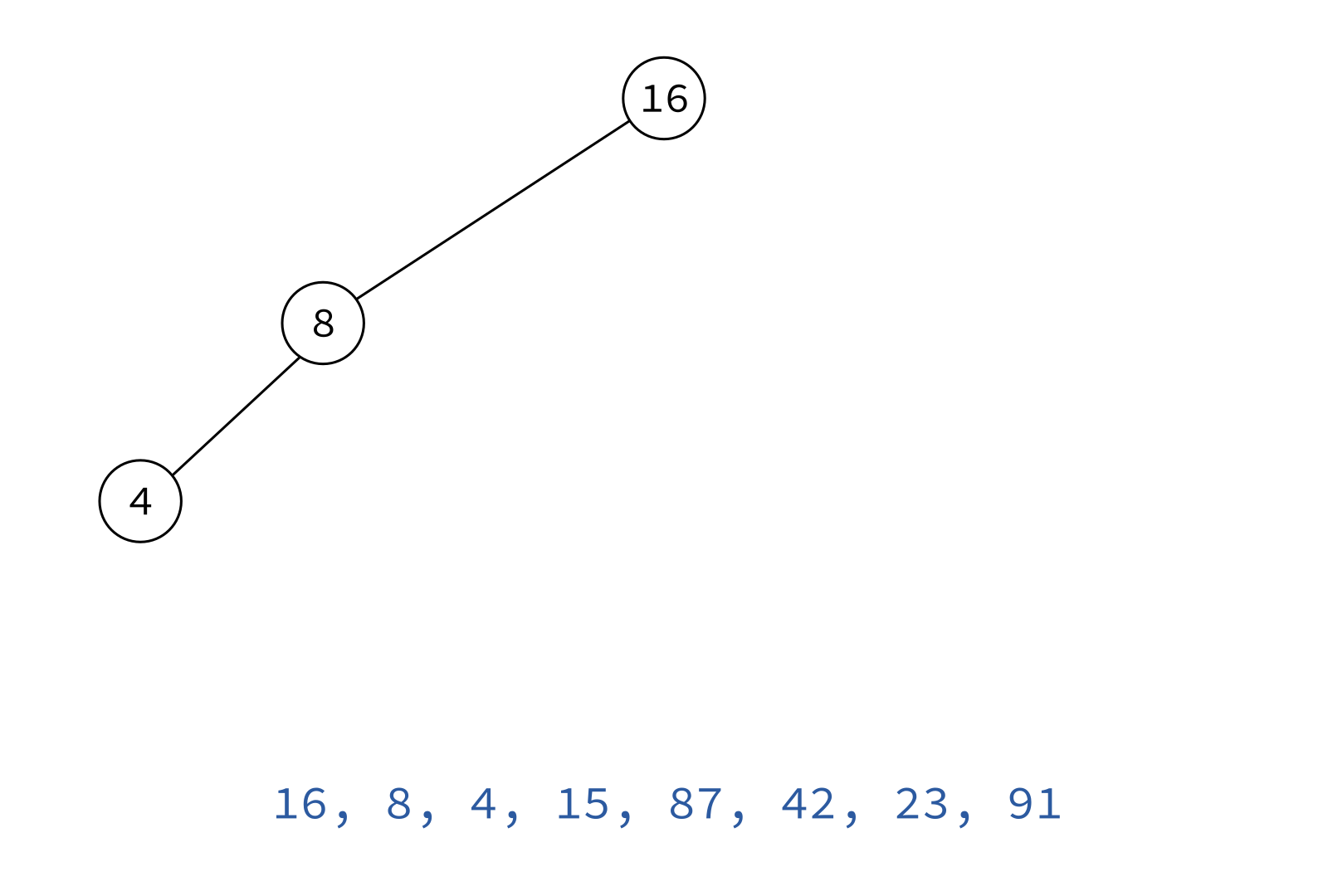
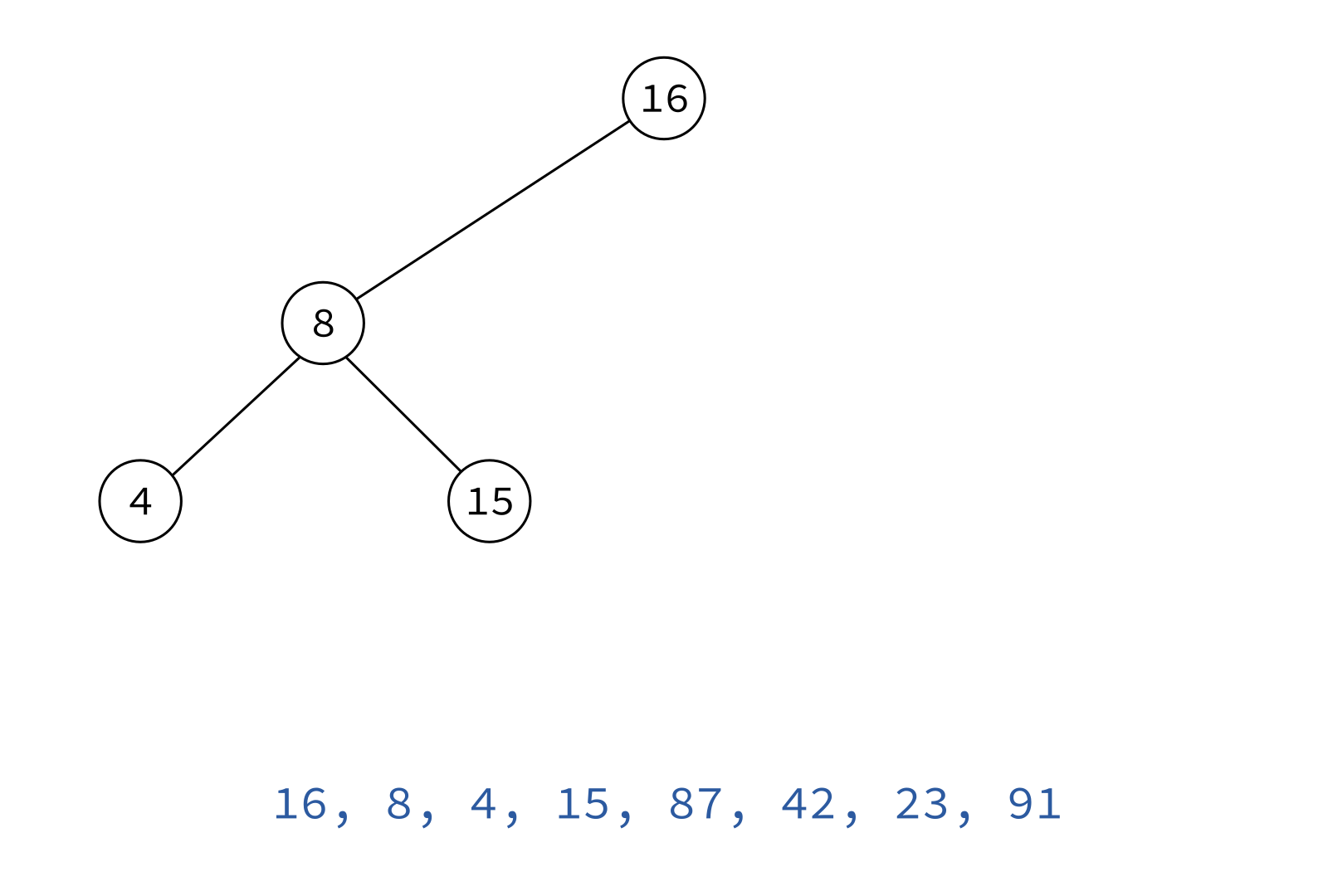
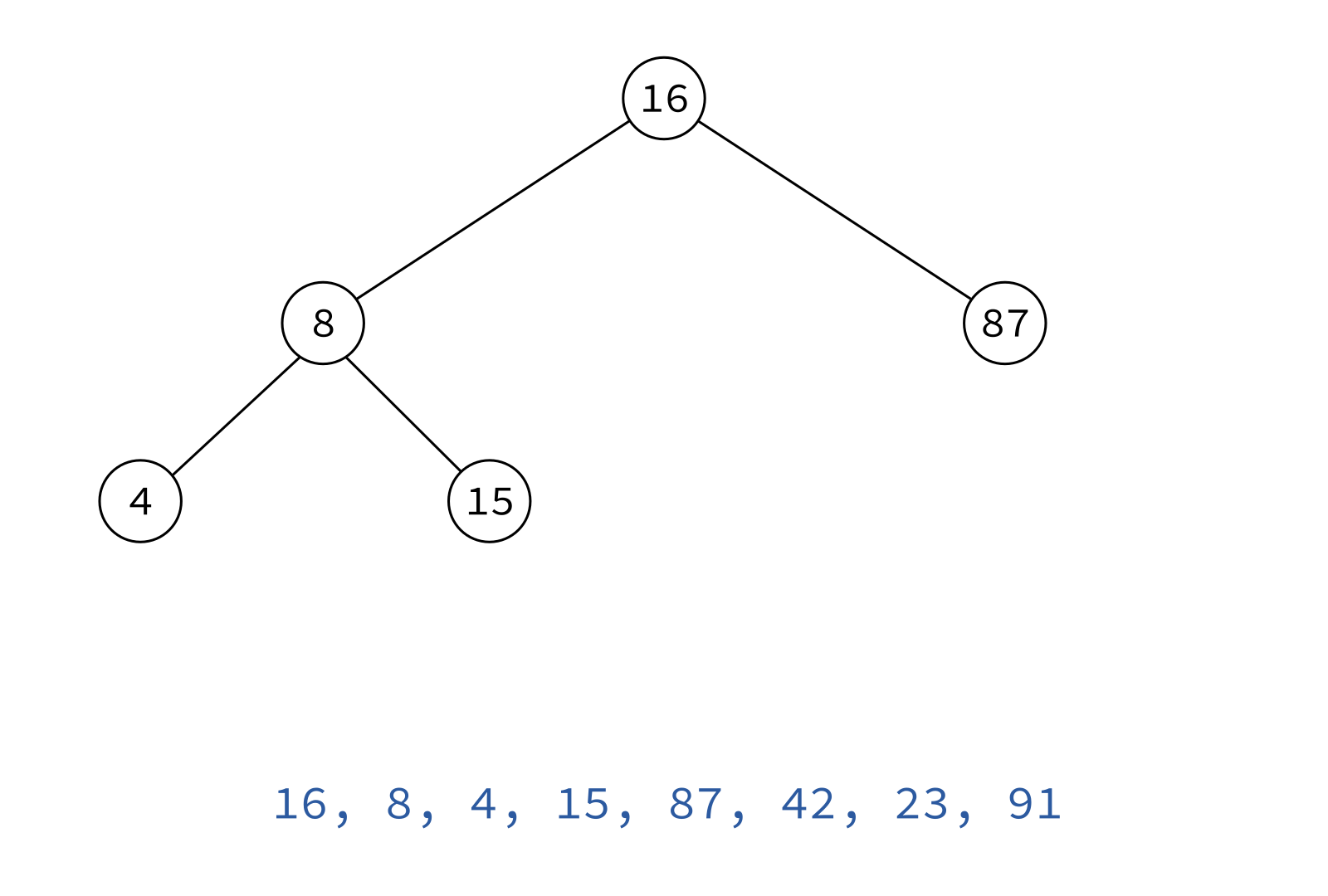
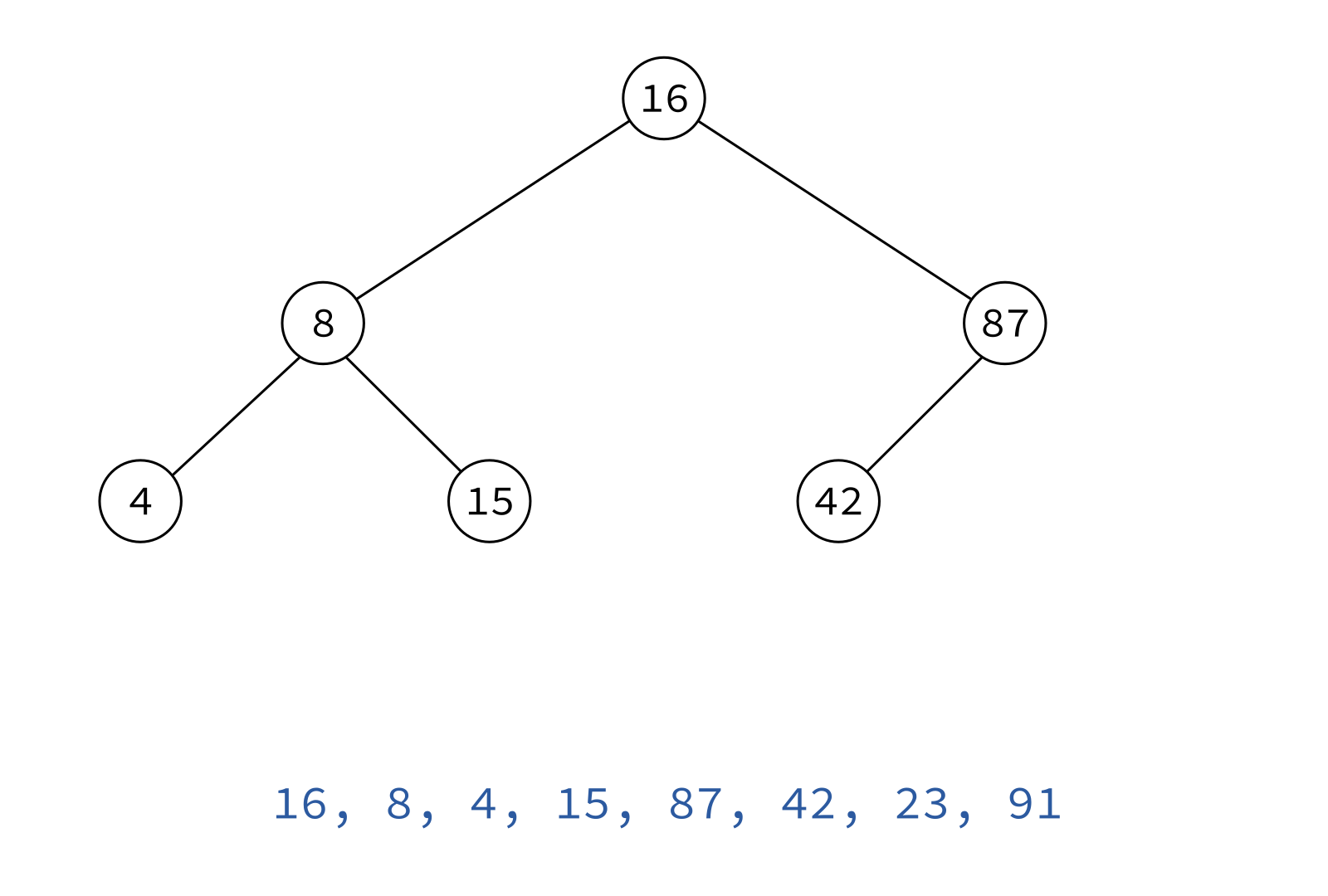
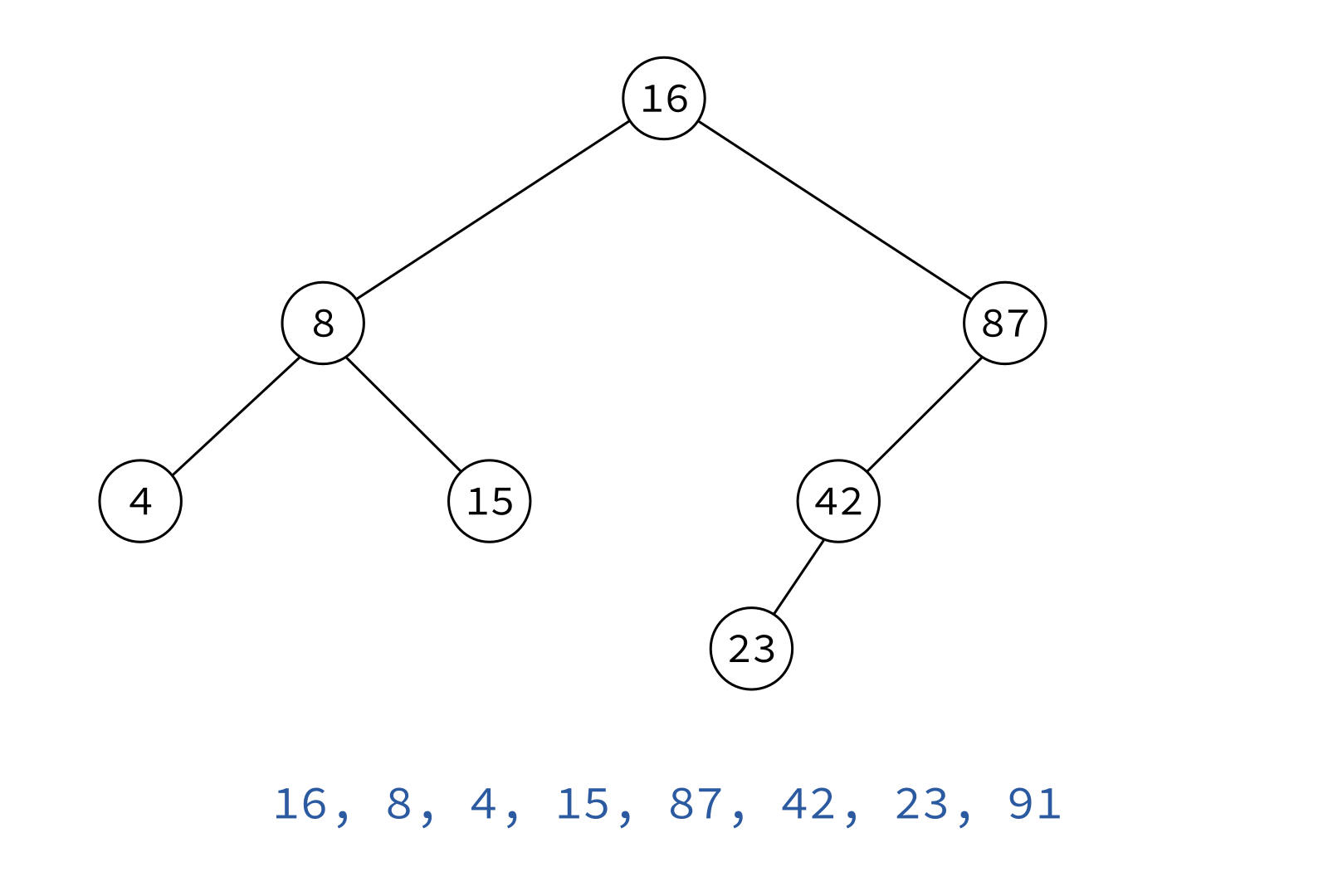
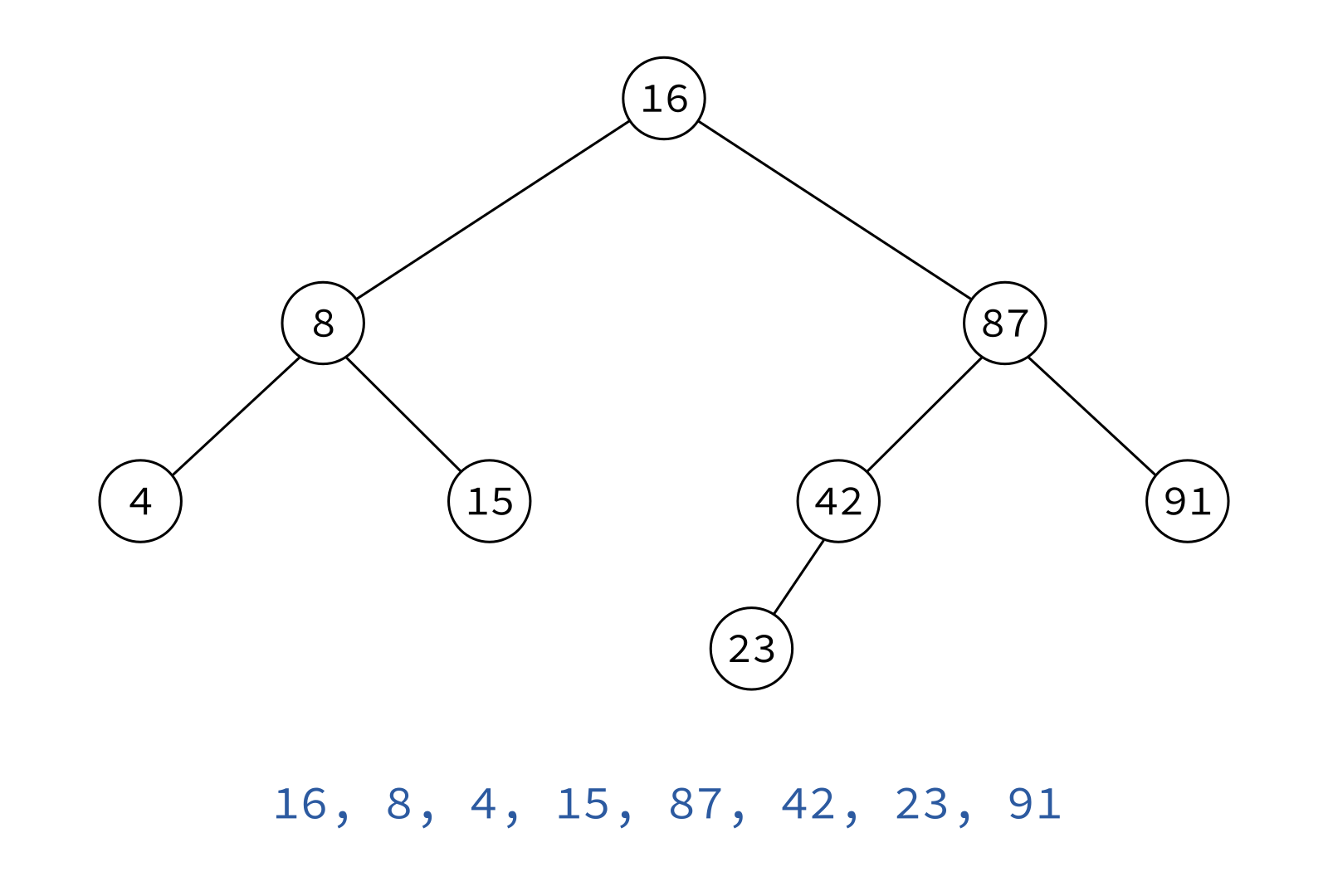
Postorder traversal
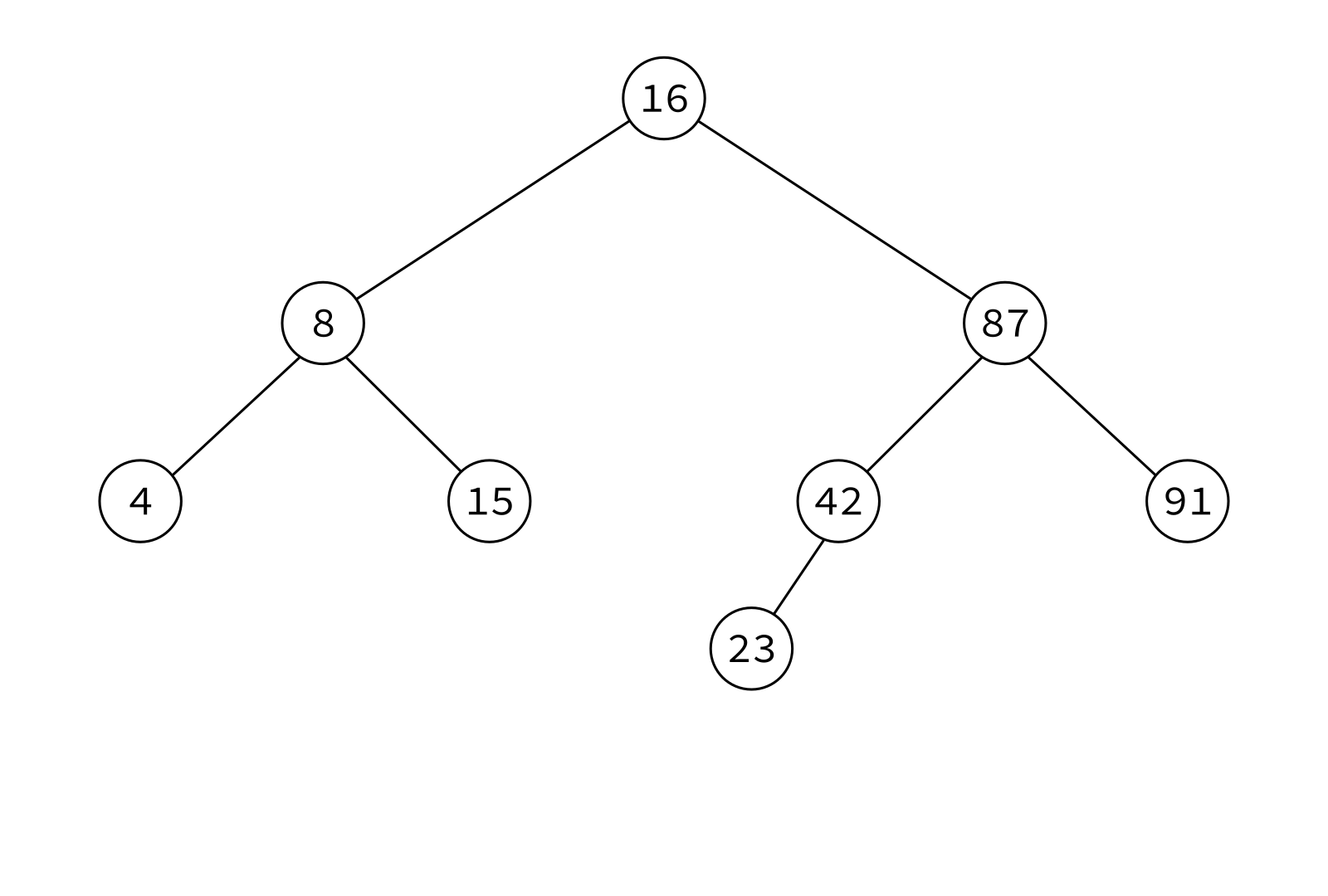
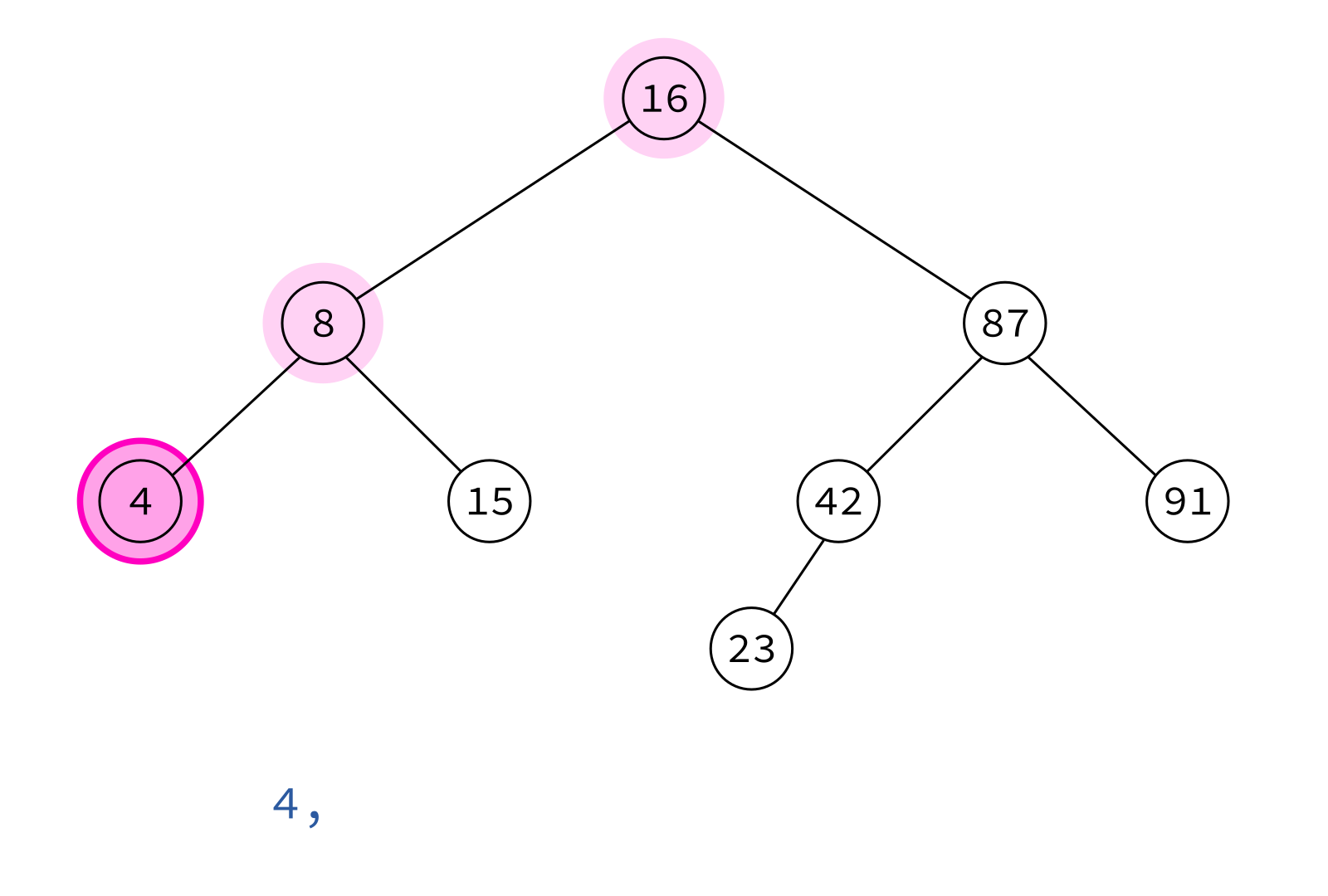
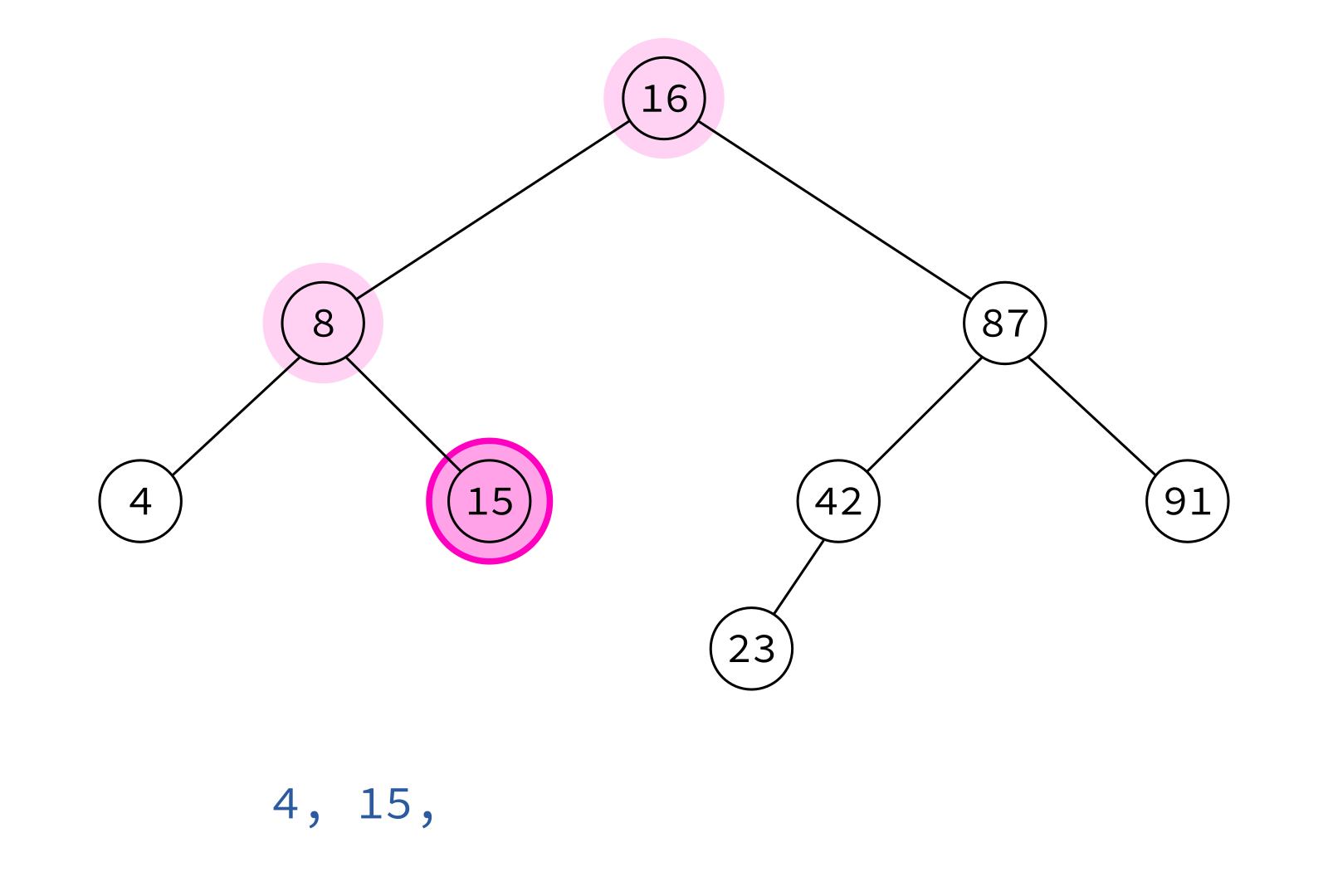
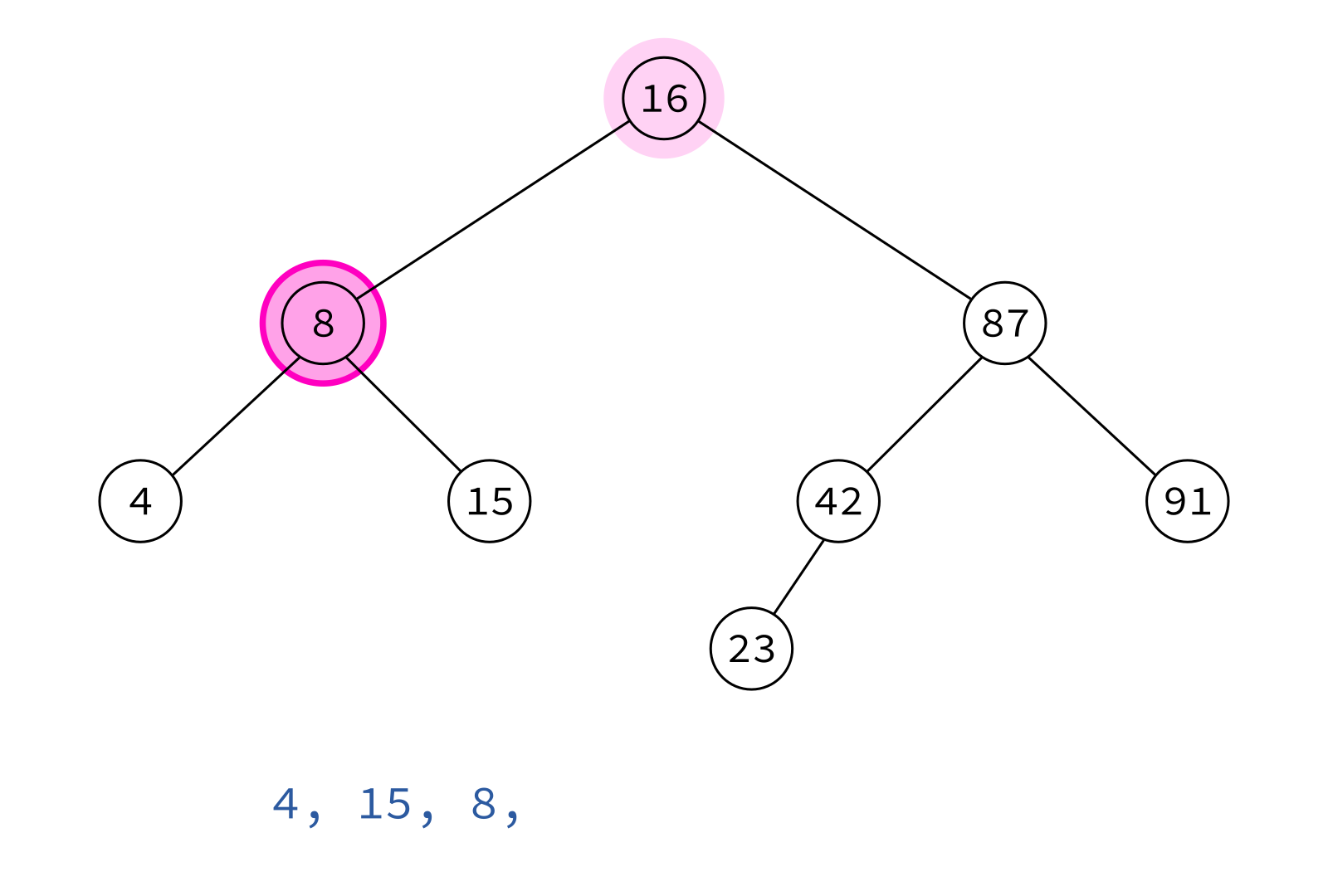
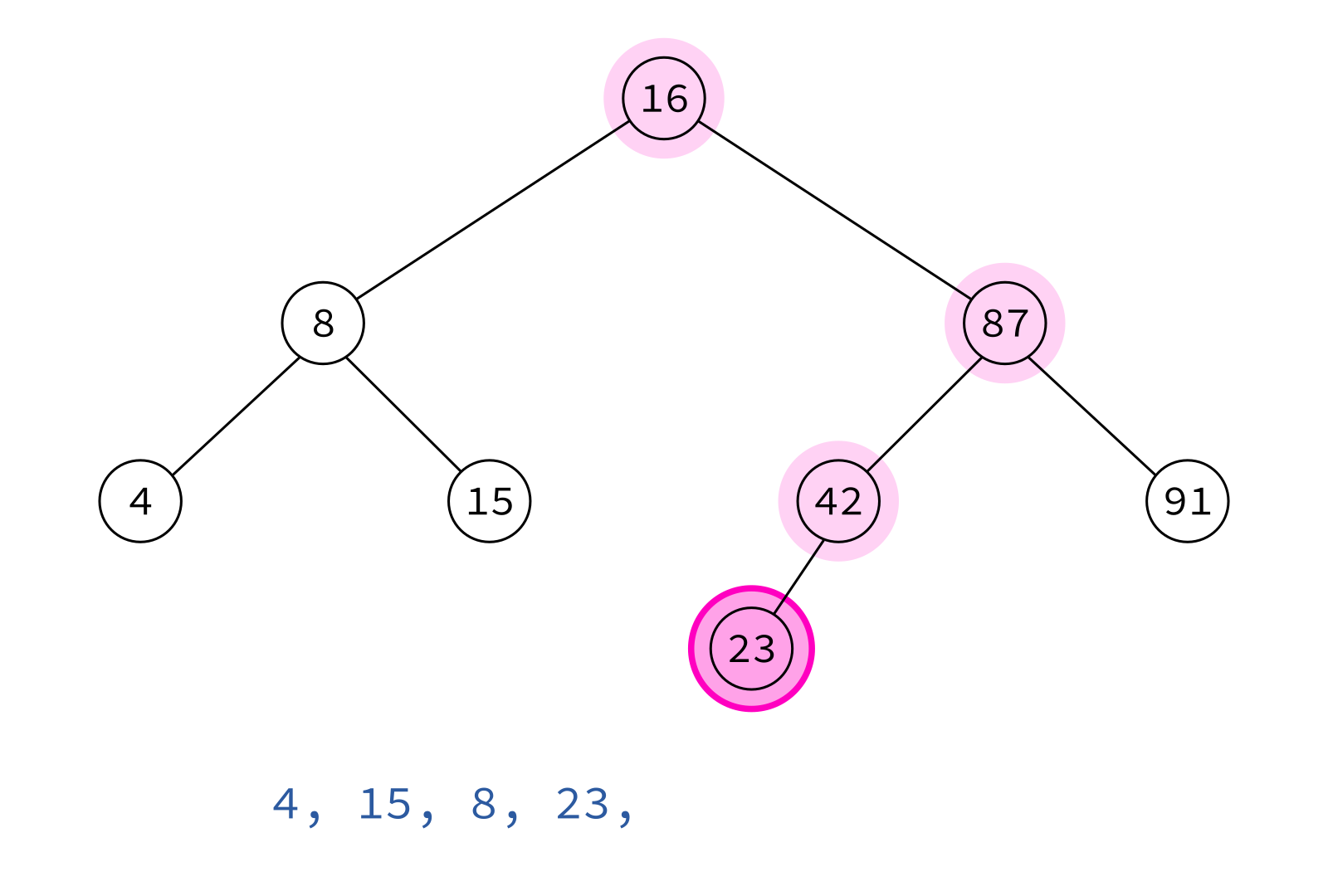
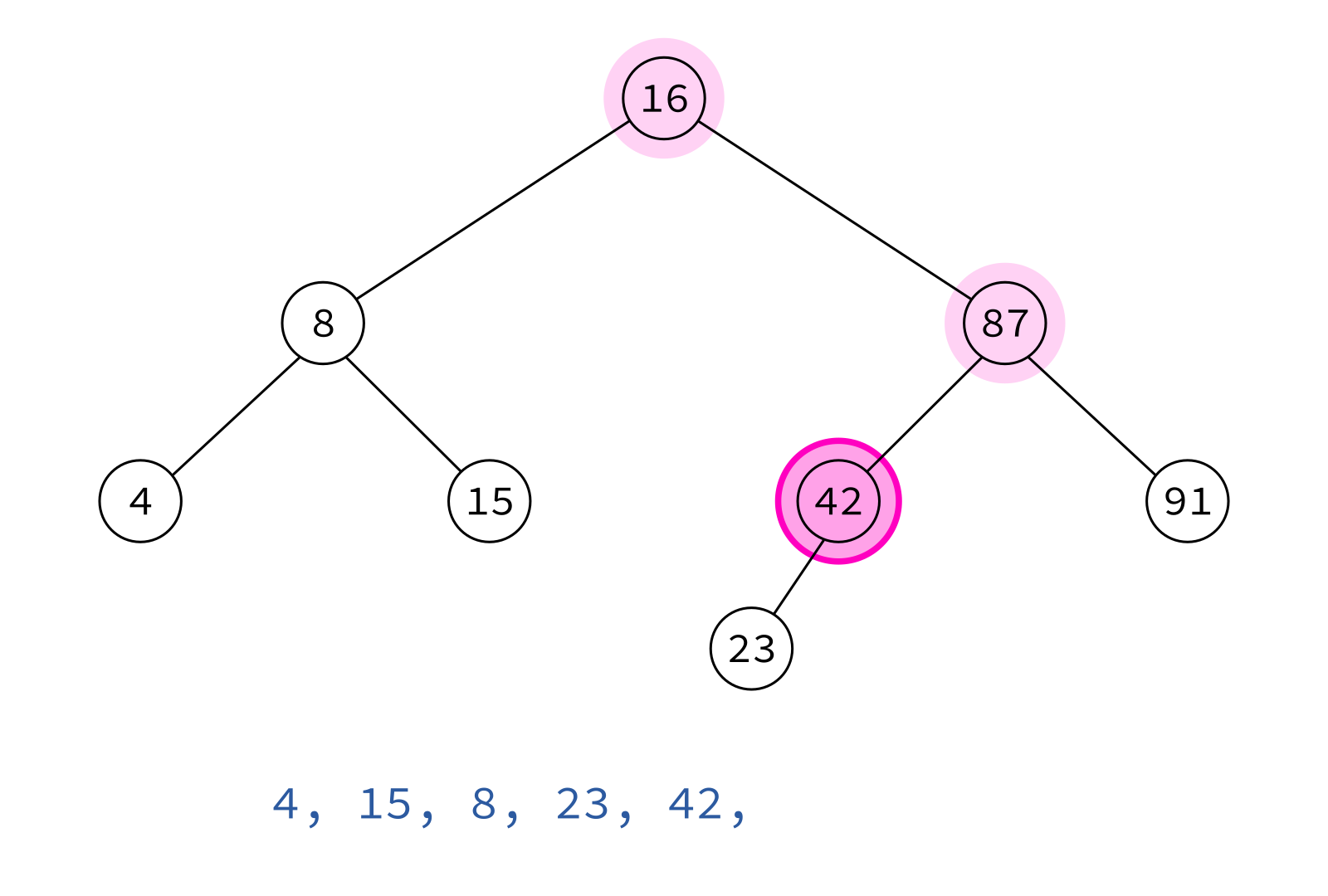
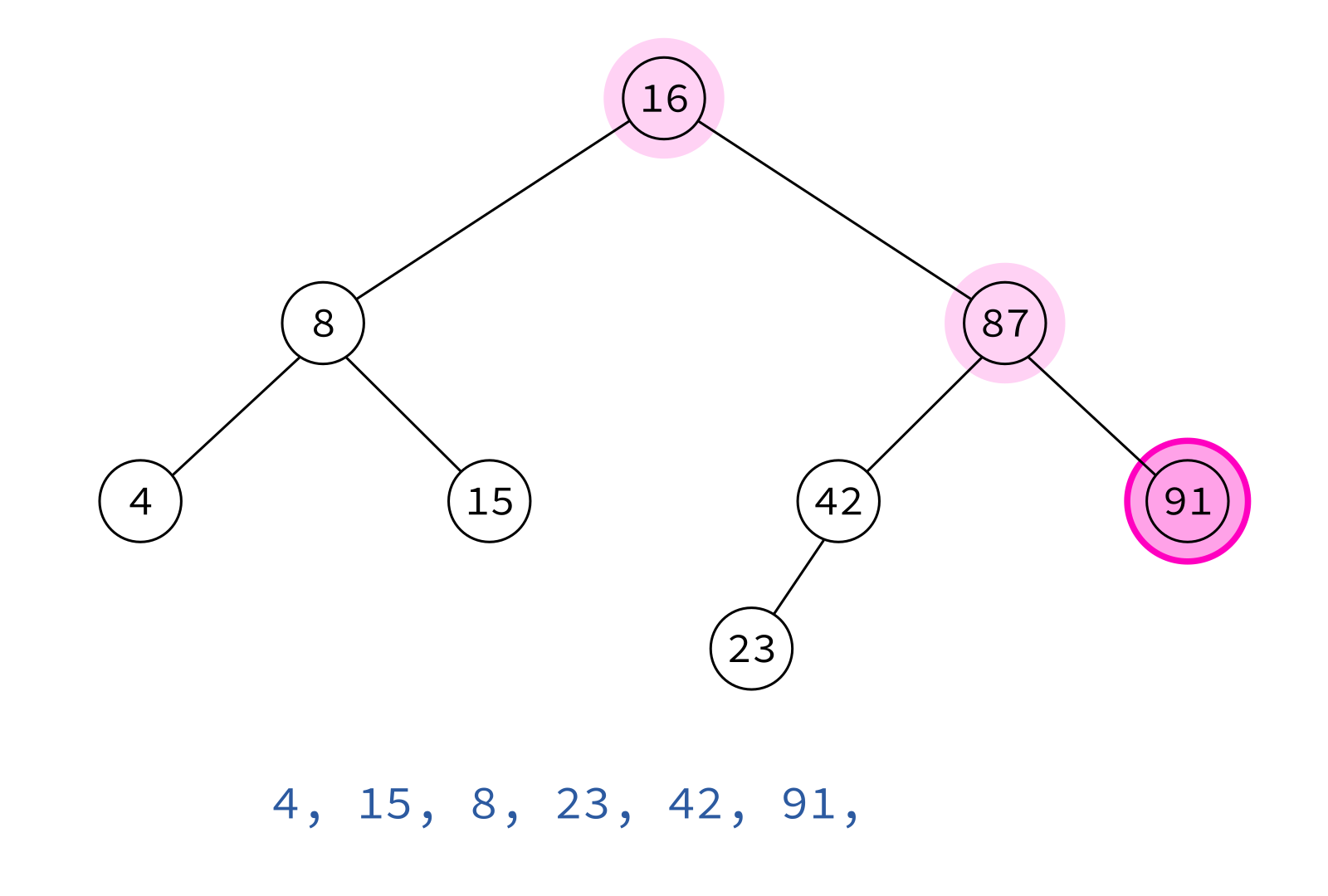
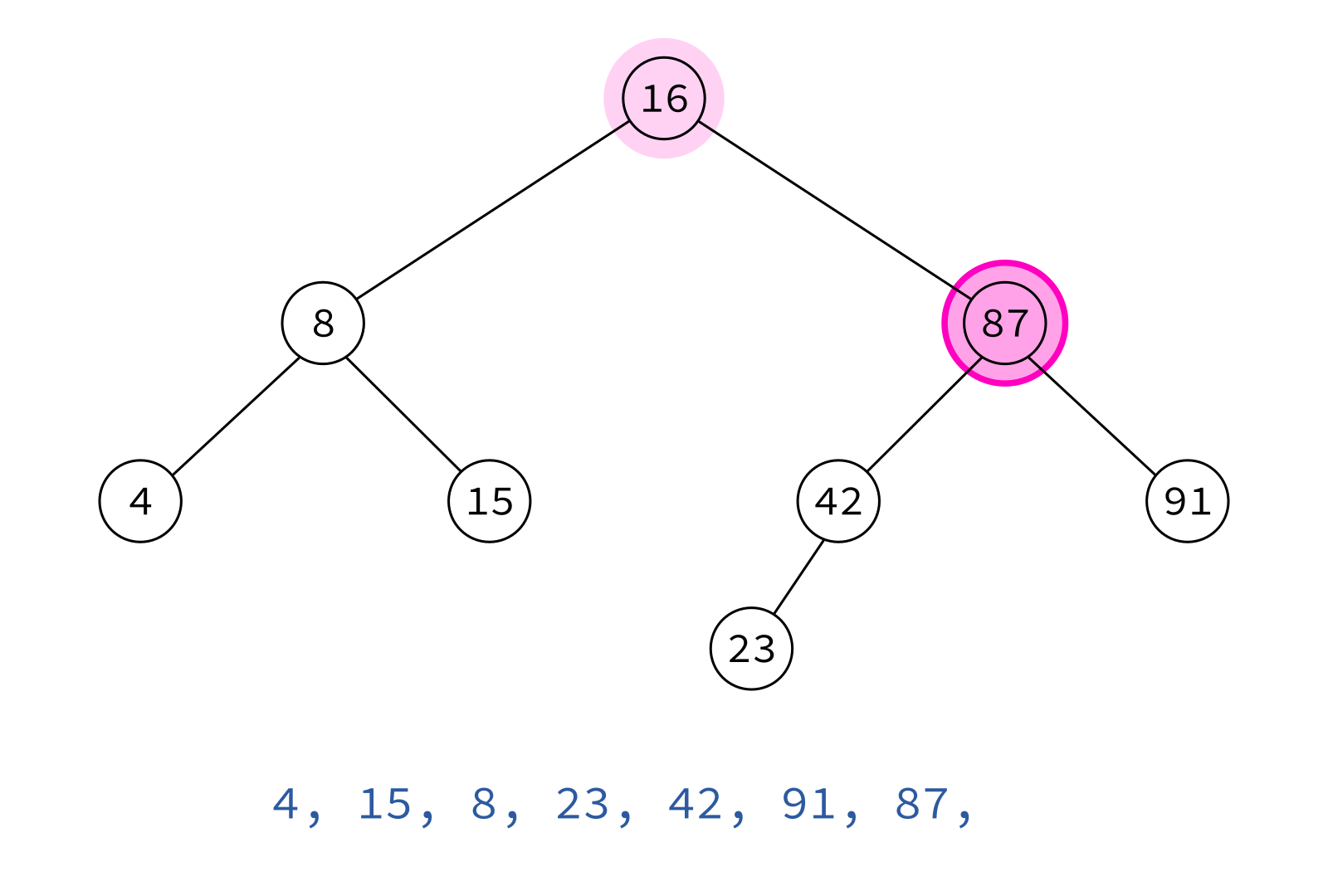
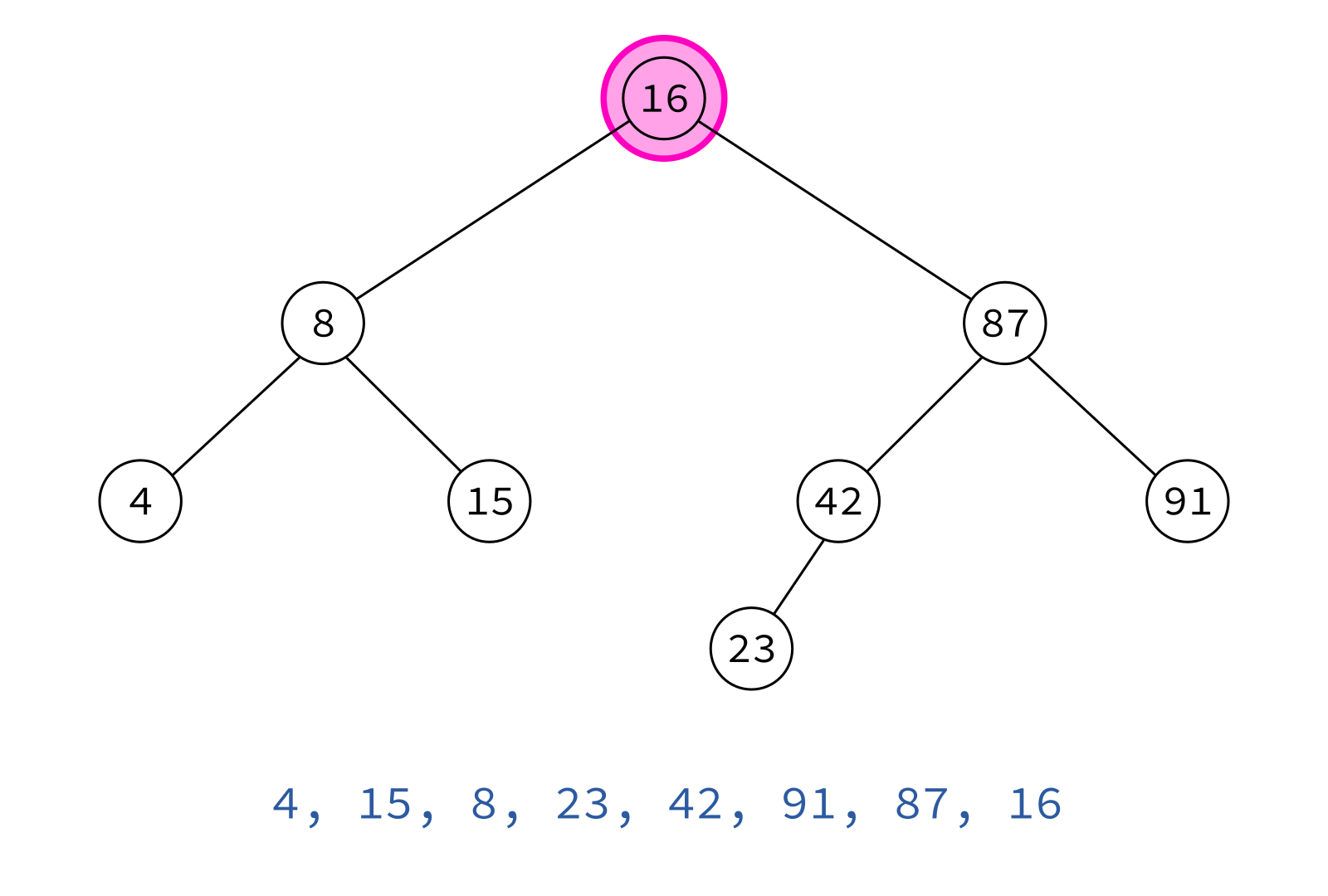
left, right, node
Postorder traversal
Typical use: Delete the tree.
If you delete keys in postorder, then you will only ever be removing nodes without children.
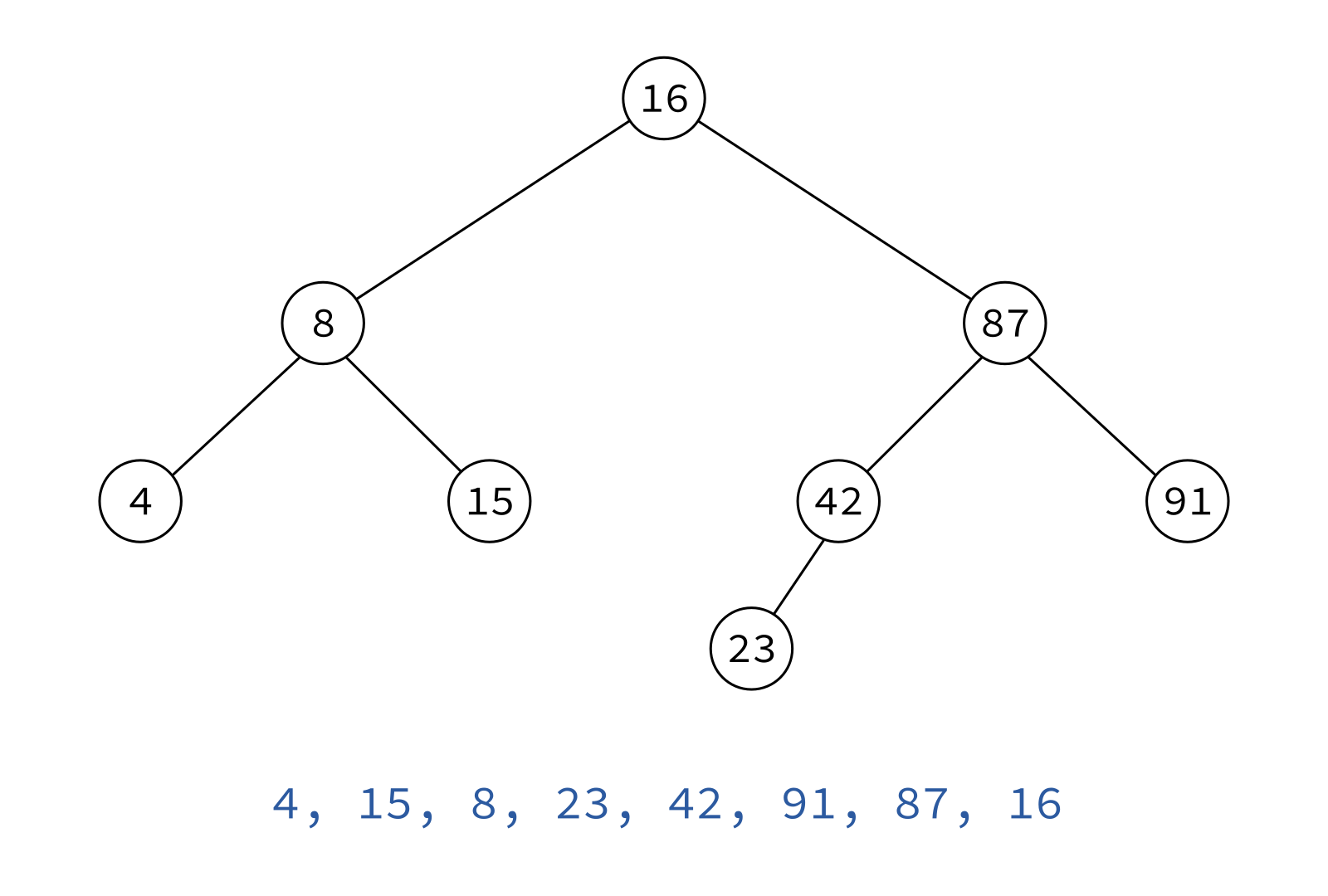
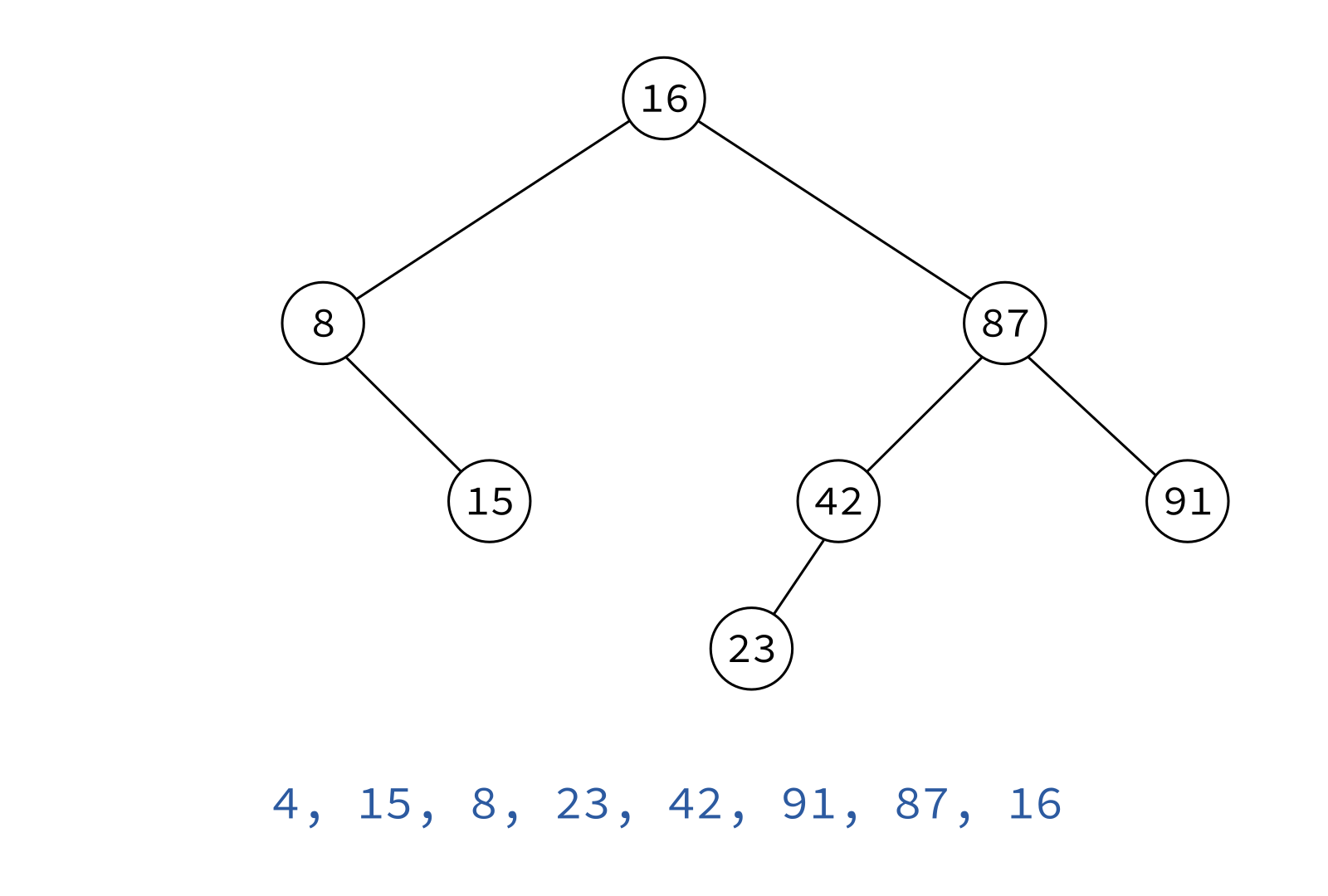
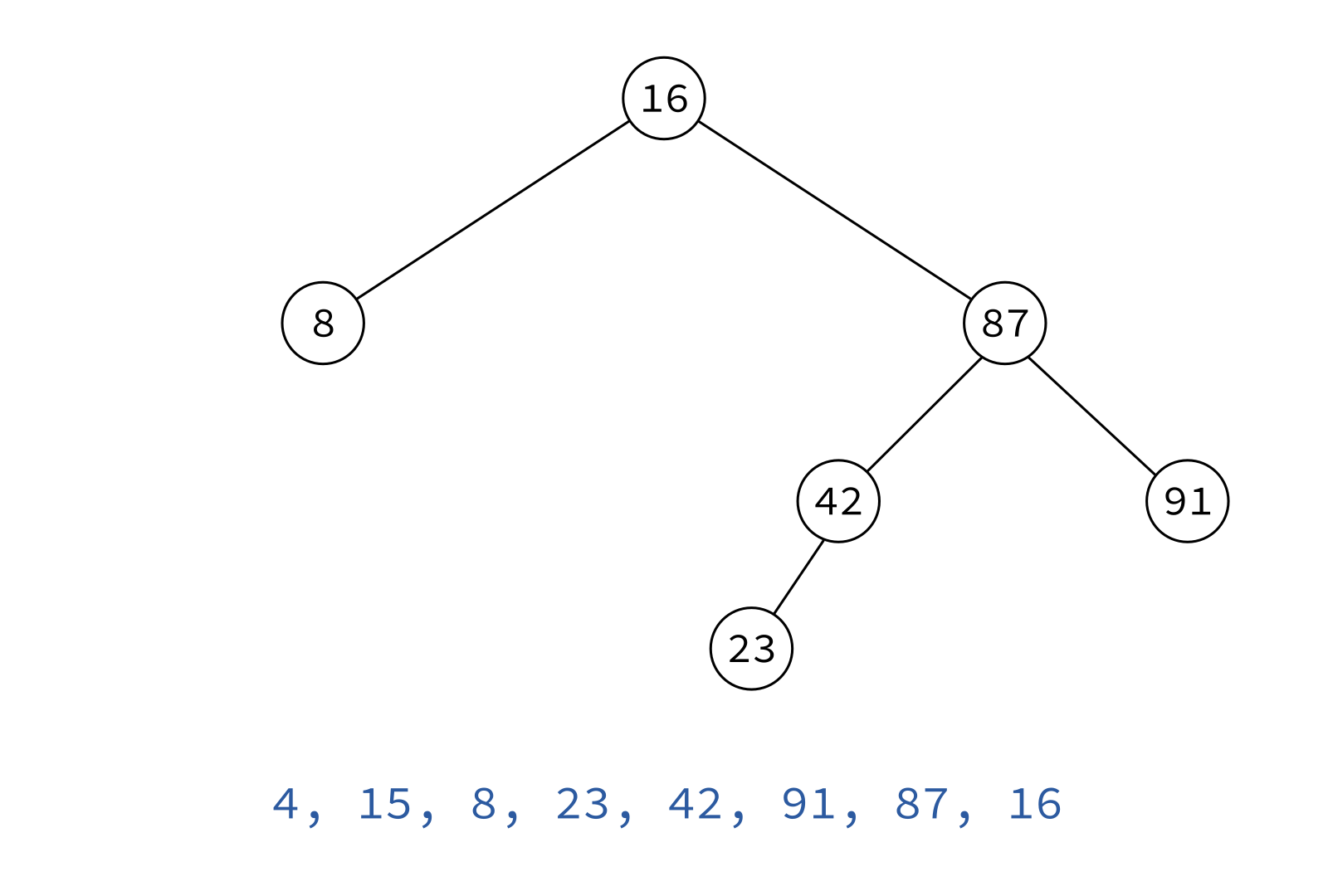
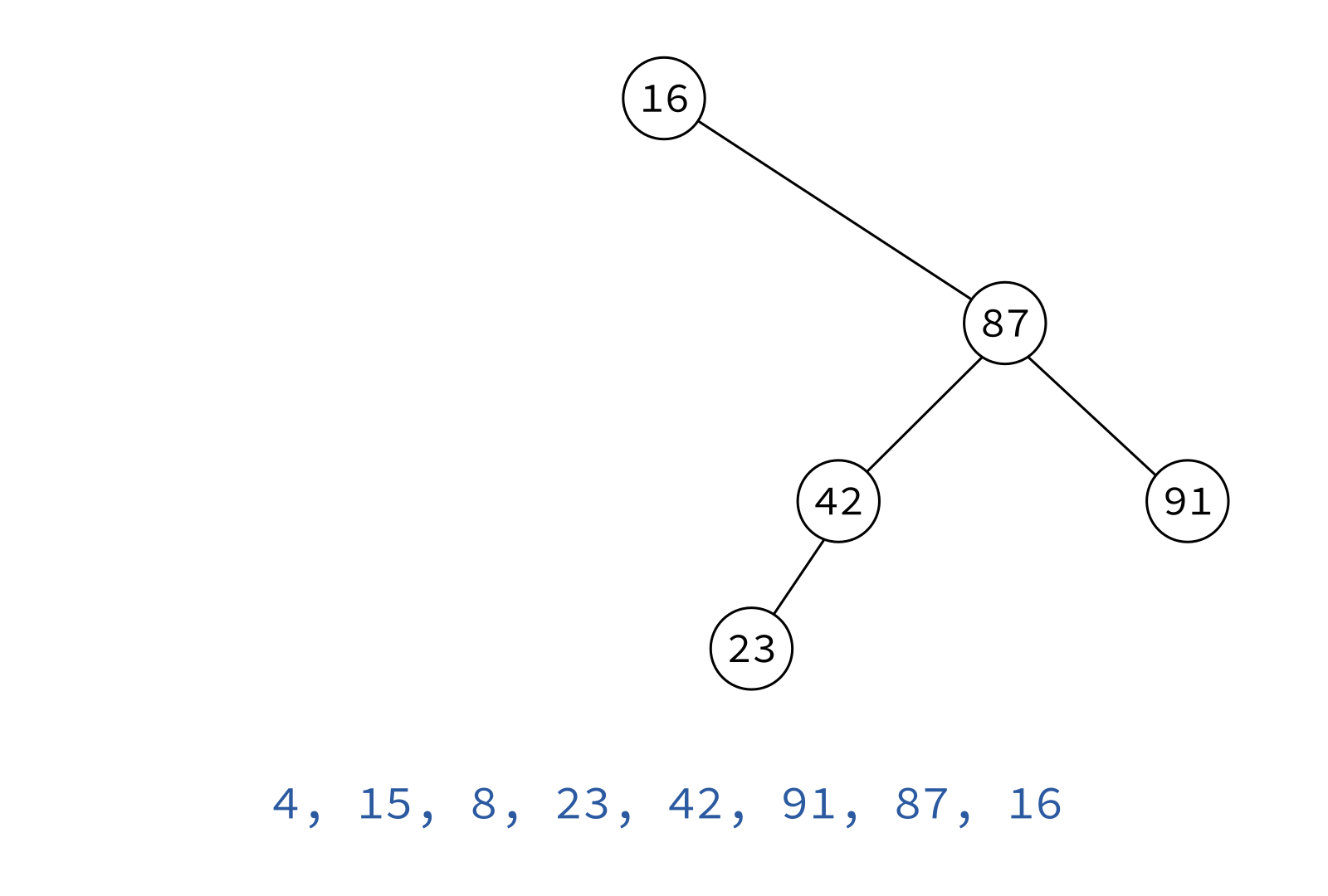
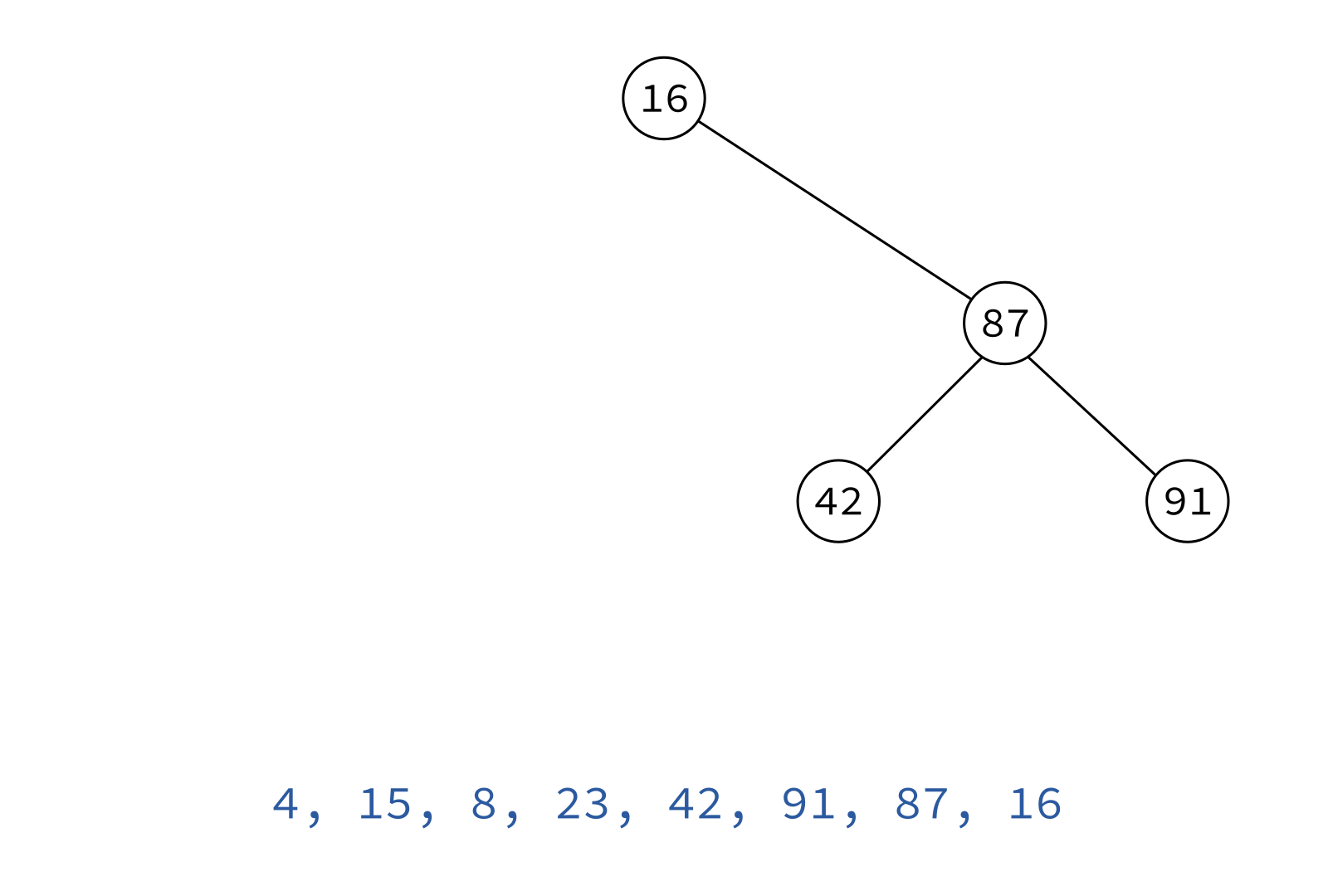
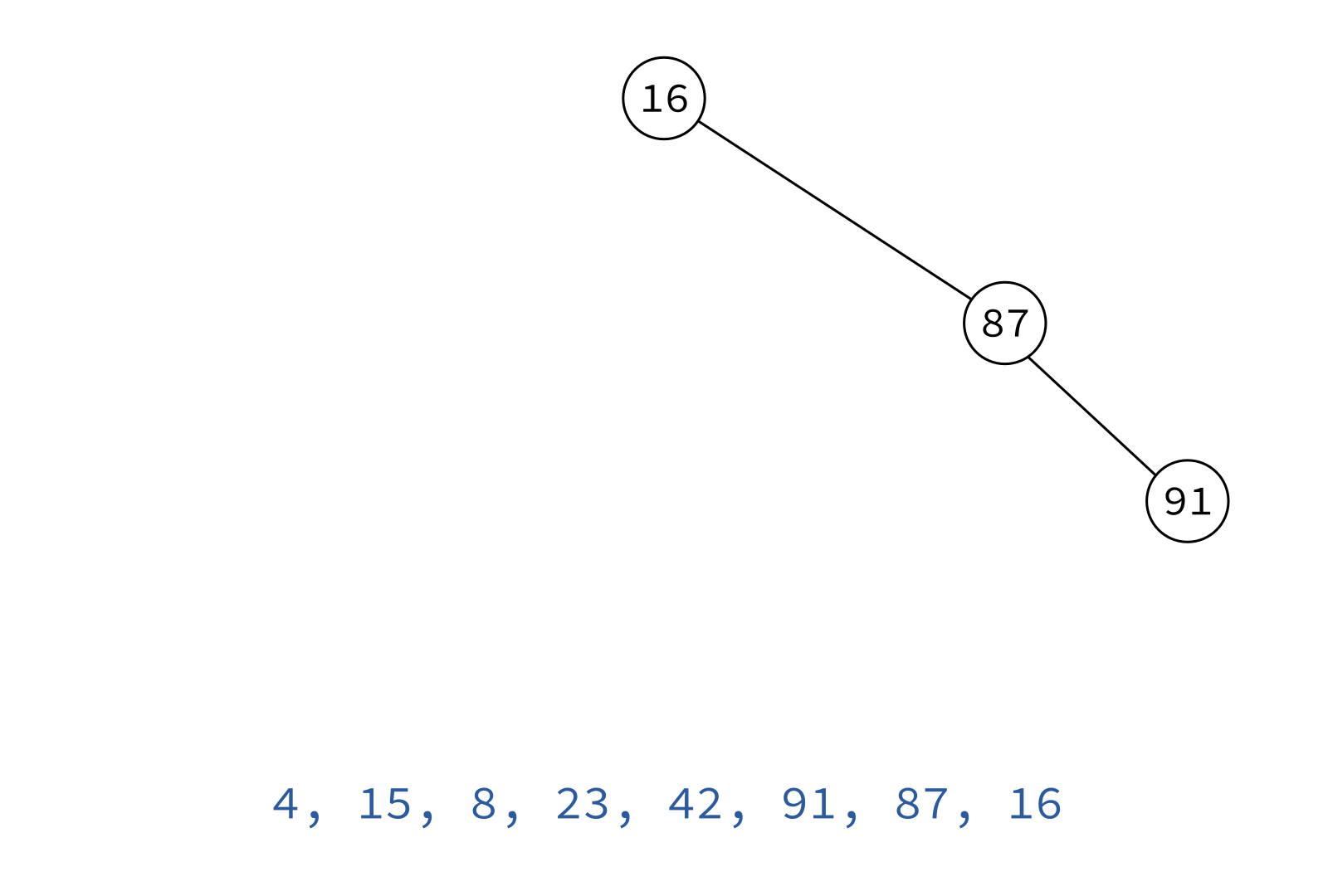
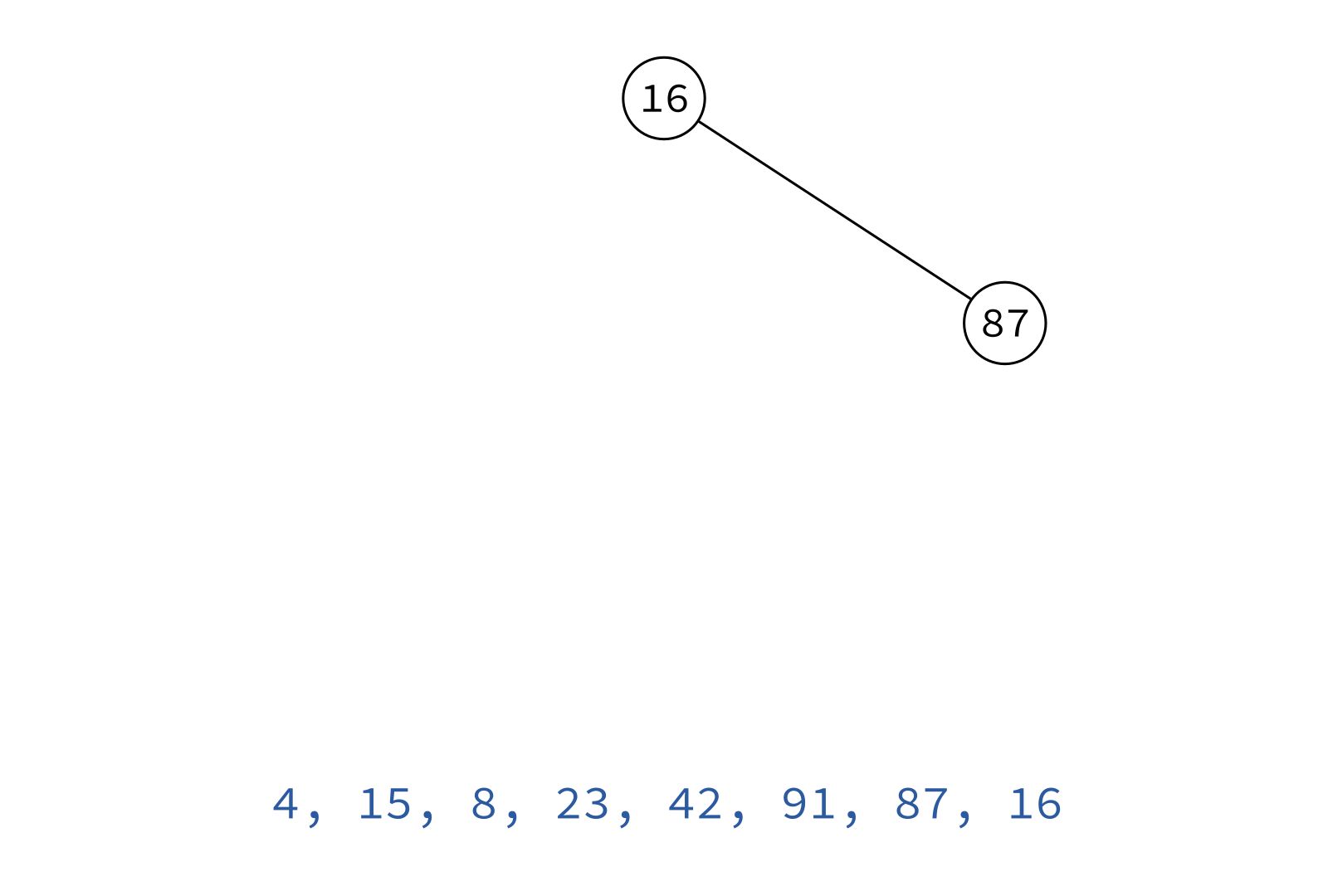
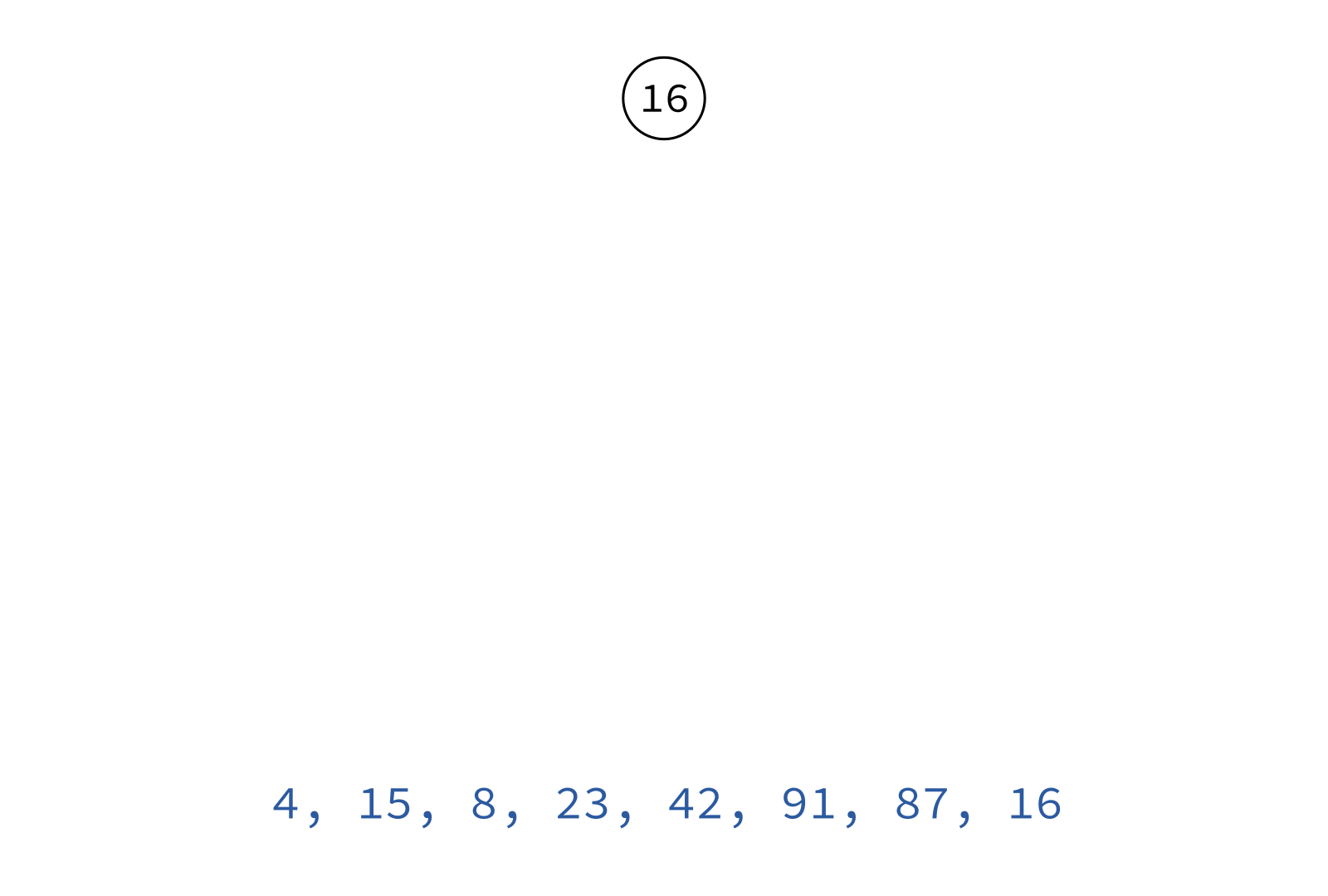
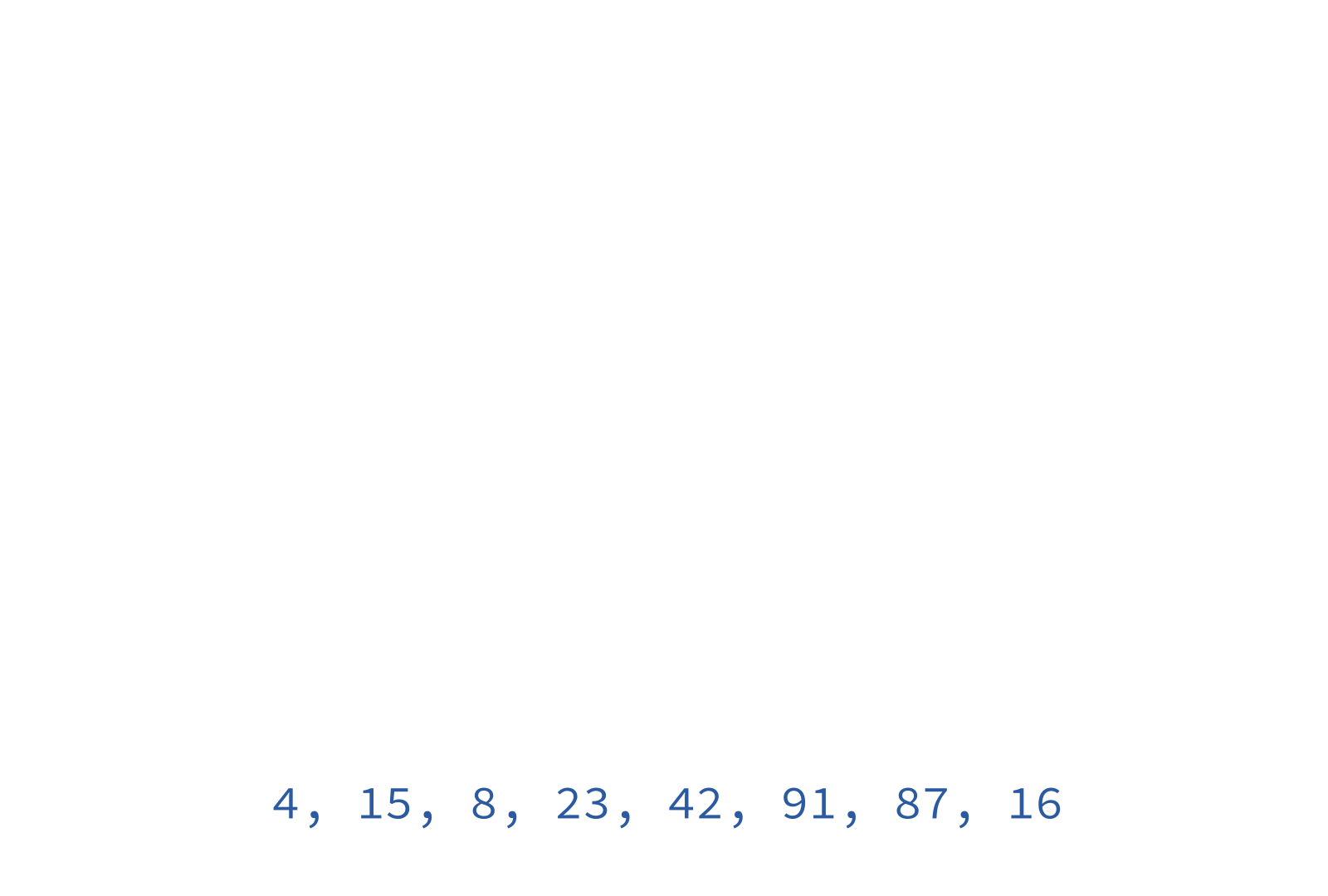
Inorder traversal
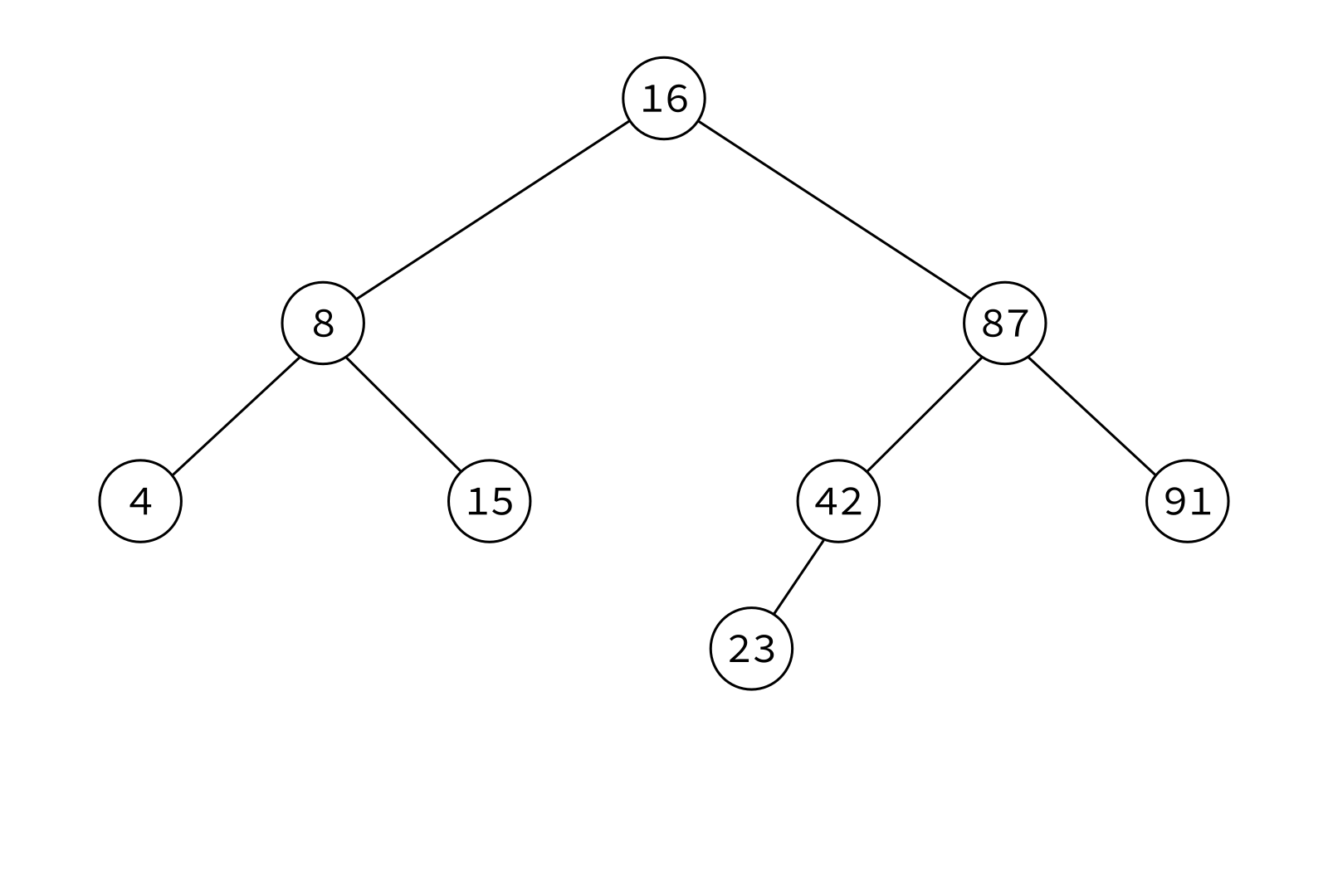
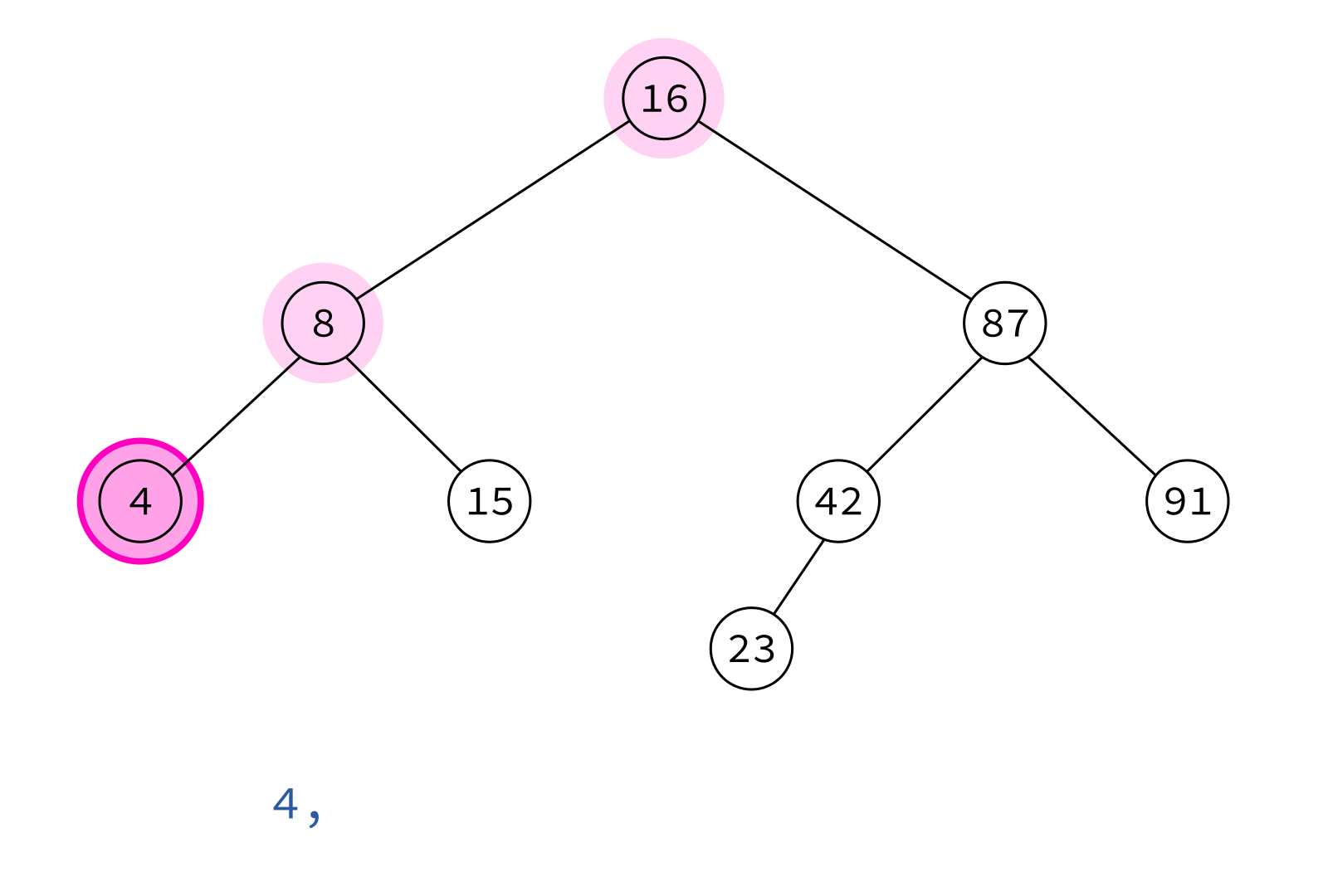
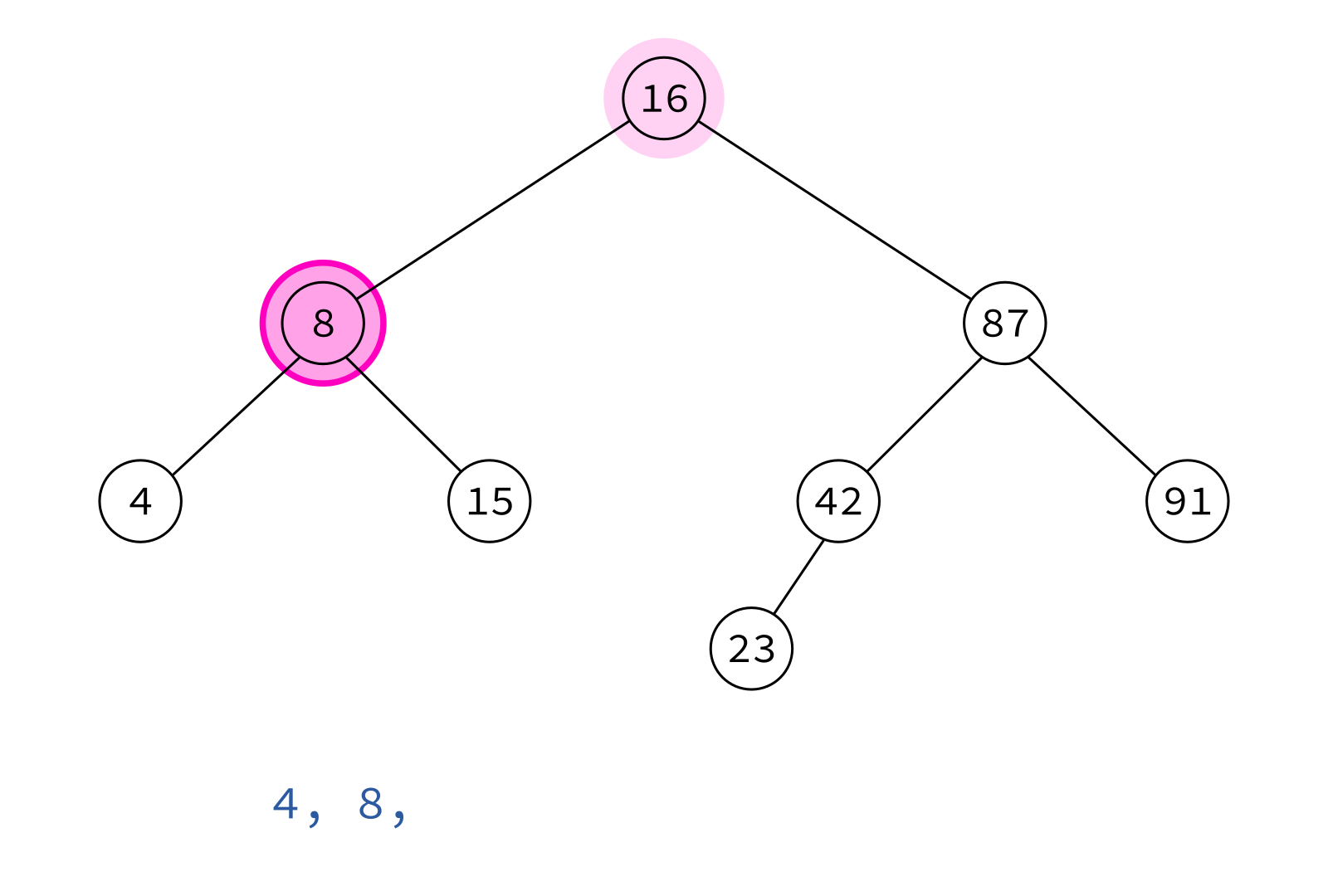
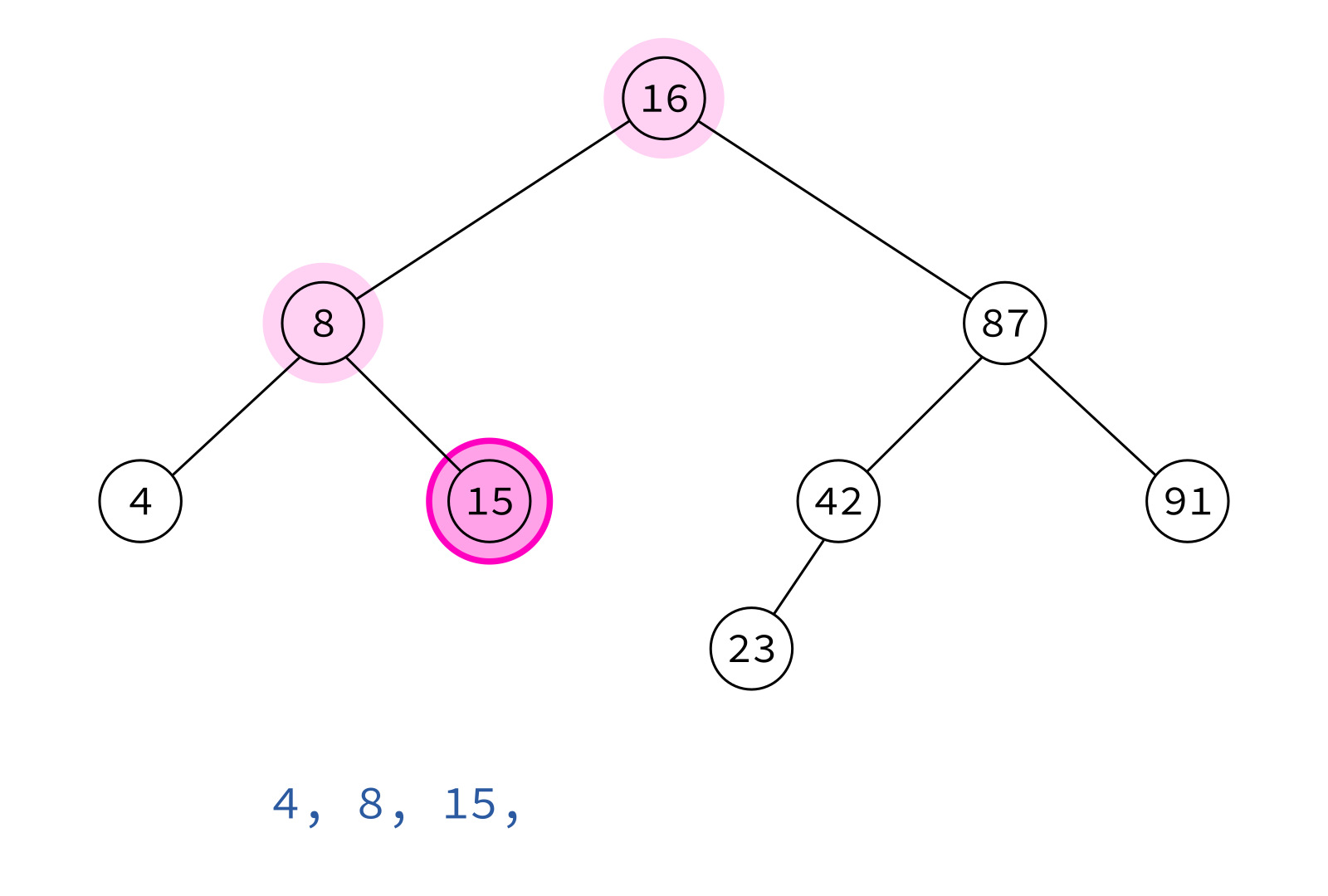
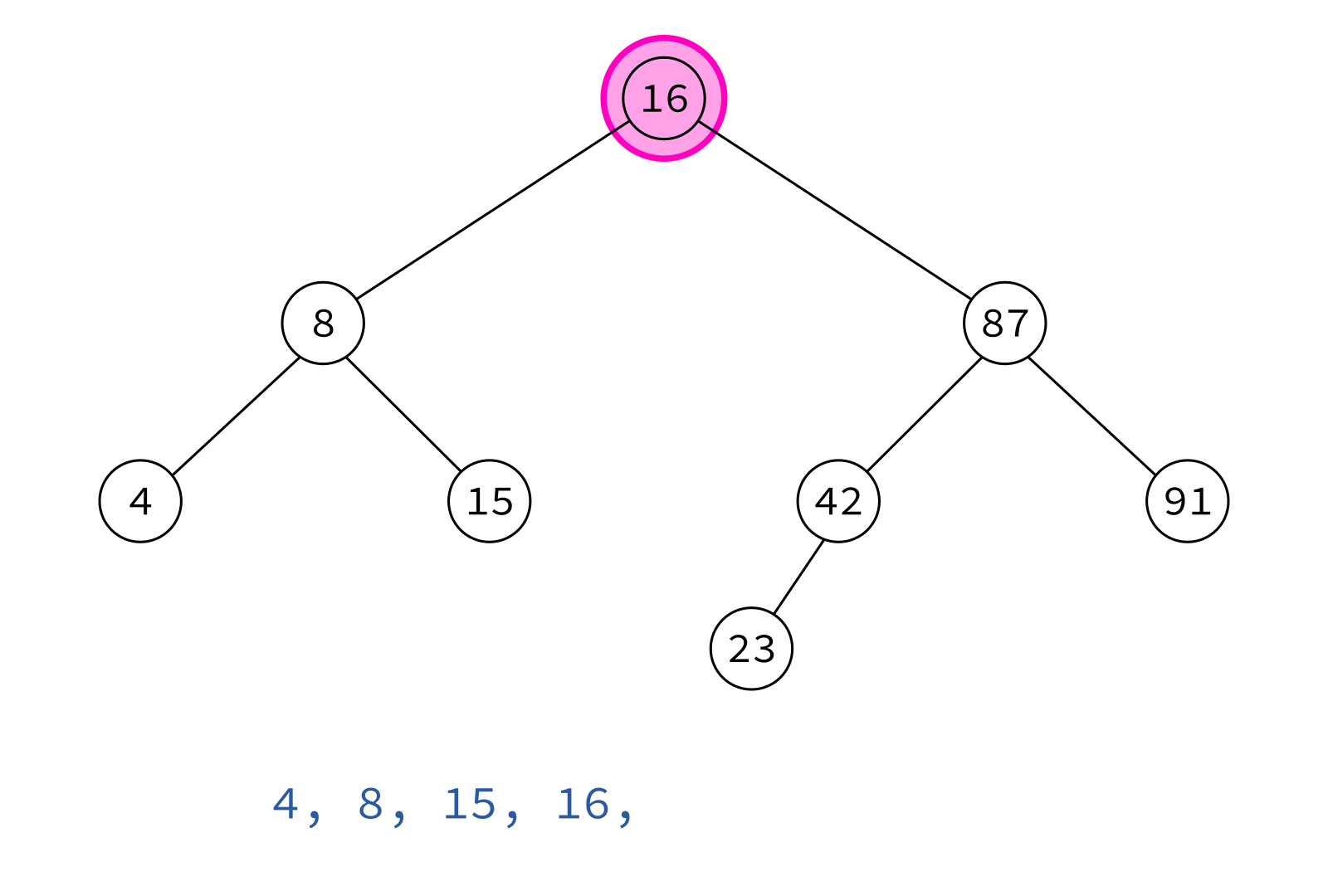
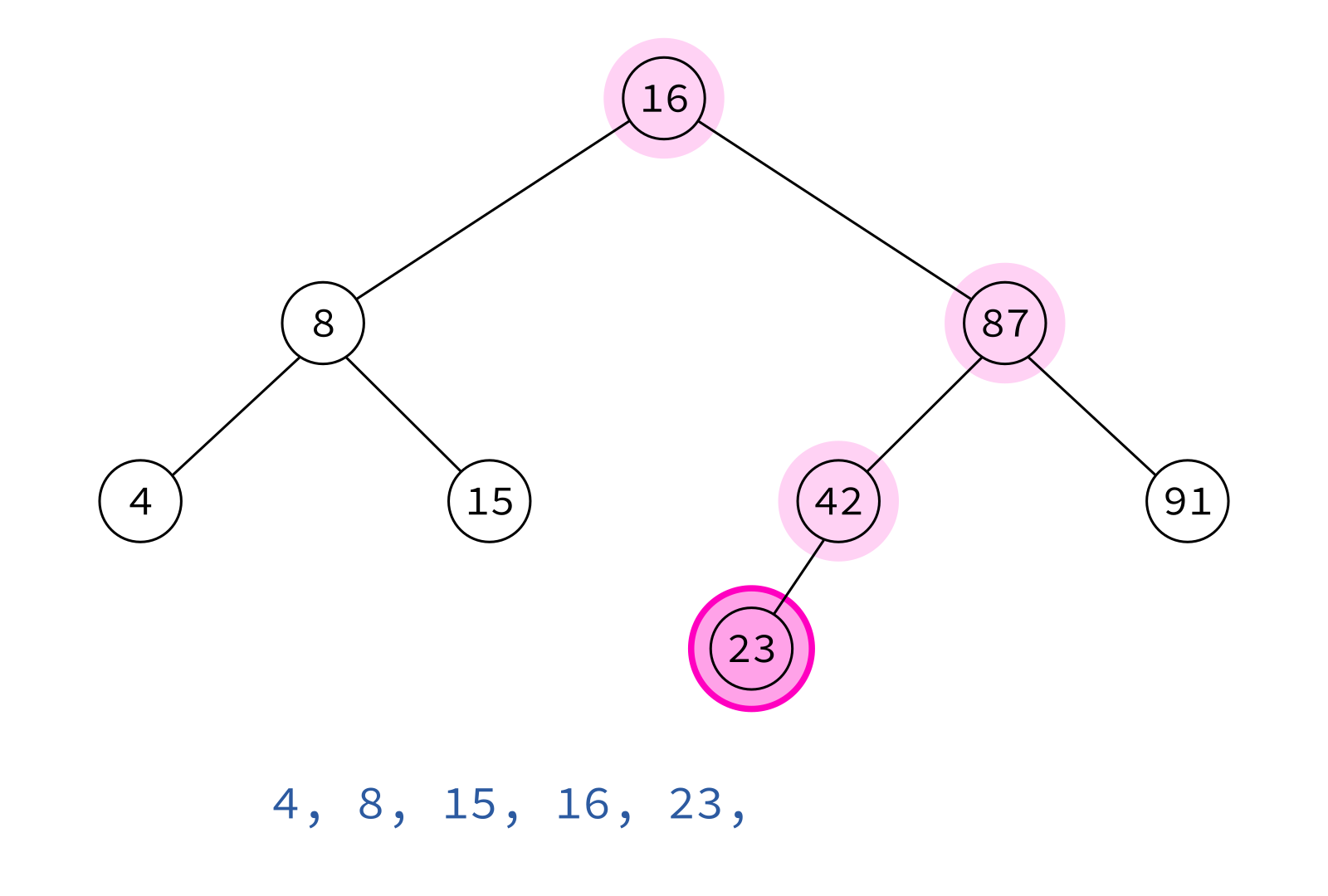
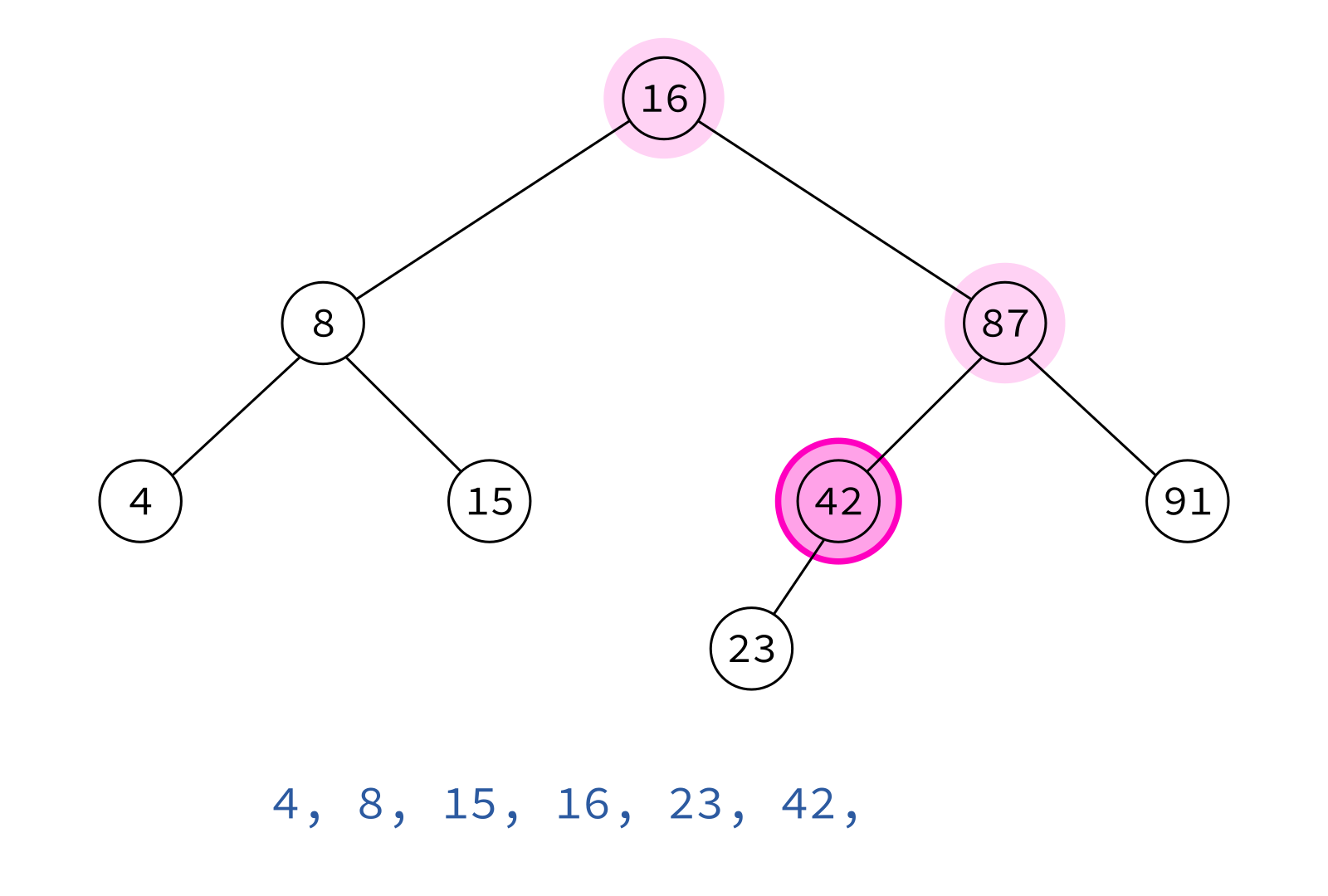
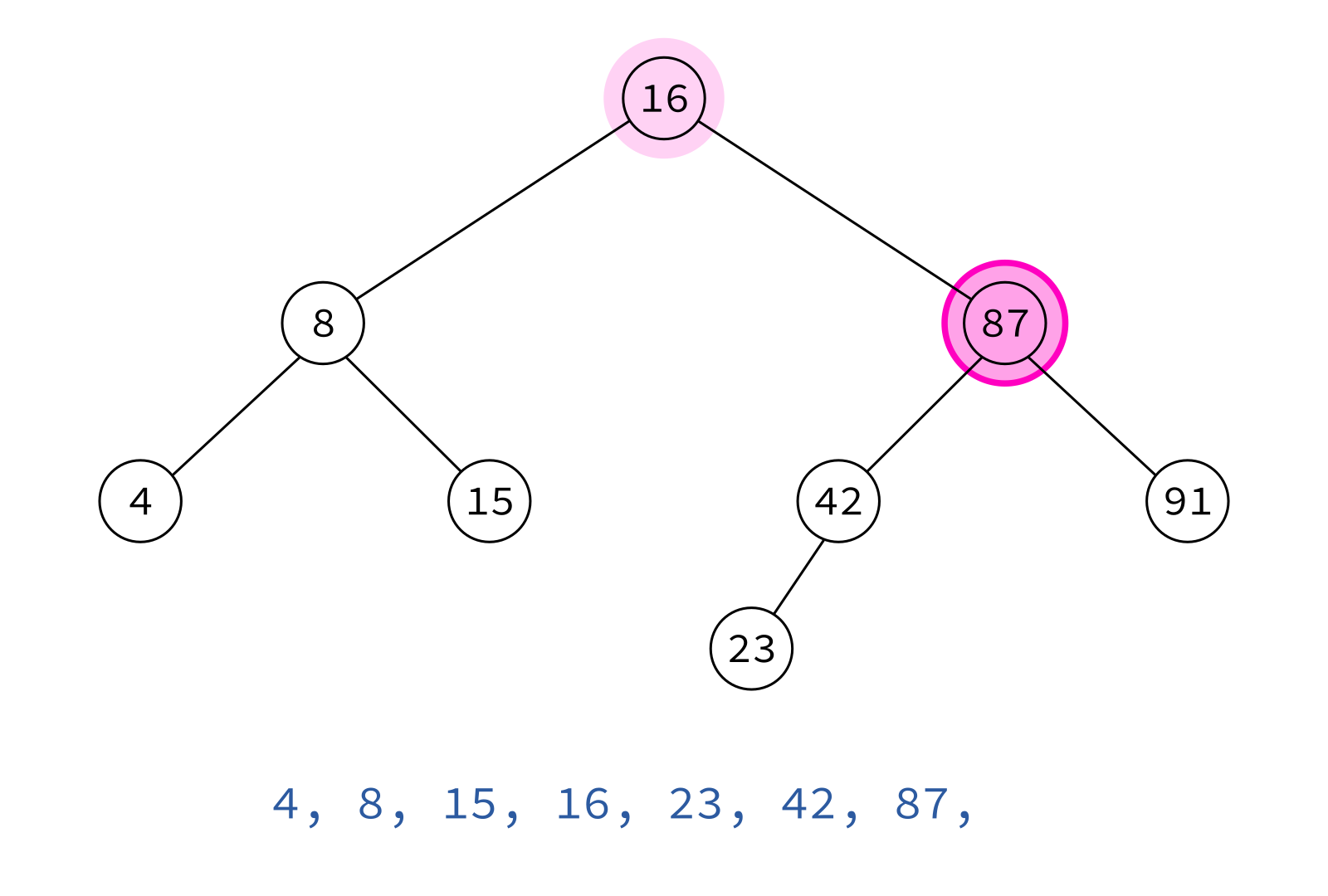
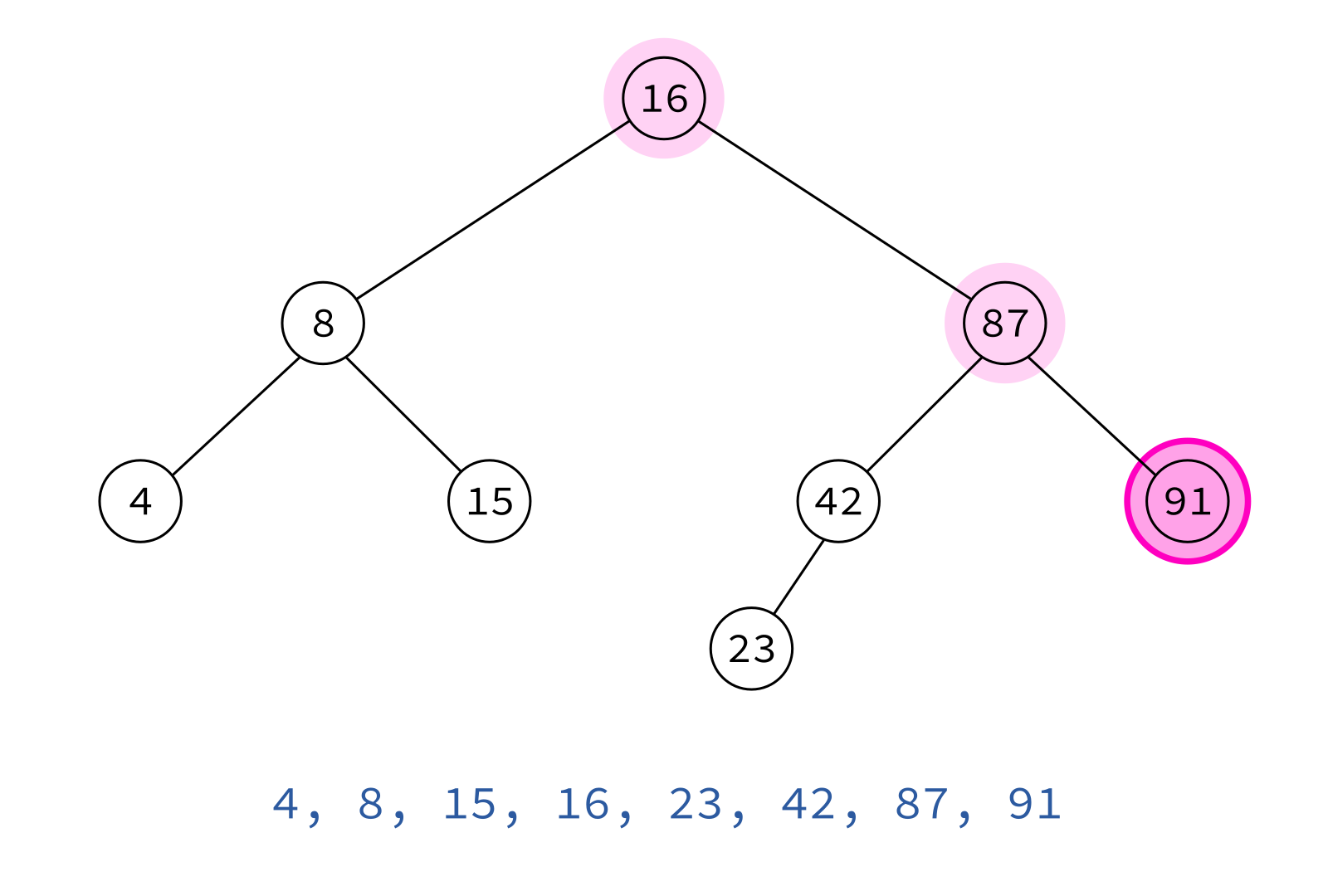
left, node, right
Inorder traversal
Typical use: Turn a BST into a sorted list of keys.
Uniquely describing a tree
Many different binary trees can have the same inorder traversal.
Many different binary trees can have the same preorder traversal.
And yet:
Theorem: A binary tree T is uniquely determined by its inorder and
preorder traversals.
Last words on binary trees
- BSTs make a lot of data accessible in a few "hops" from the root.
- They are a good choice for mutable data structures involving search operations.
- Deletion of a node is an important feature we didn't implement. (Take MCS 360!)
- Unbalanced trees are less efficient.
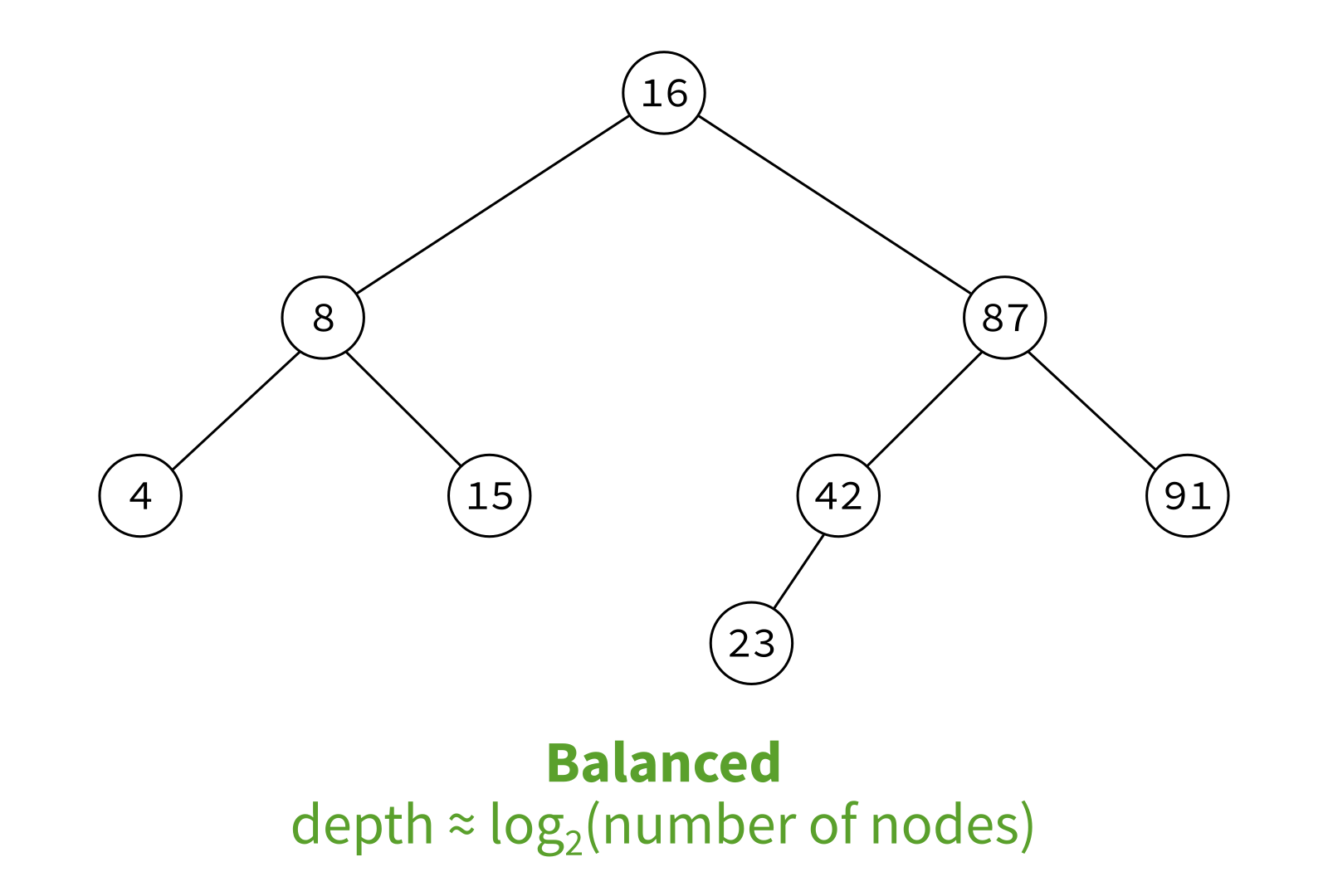
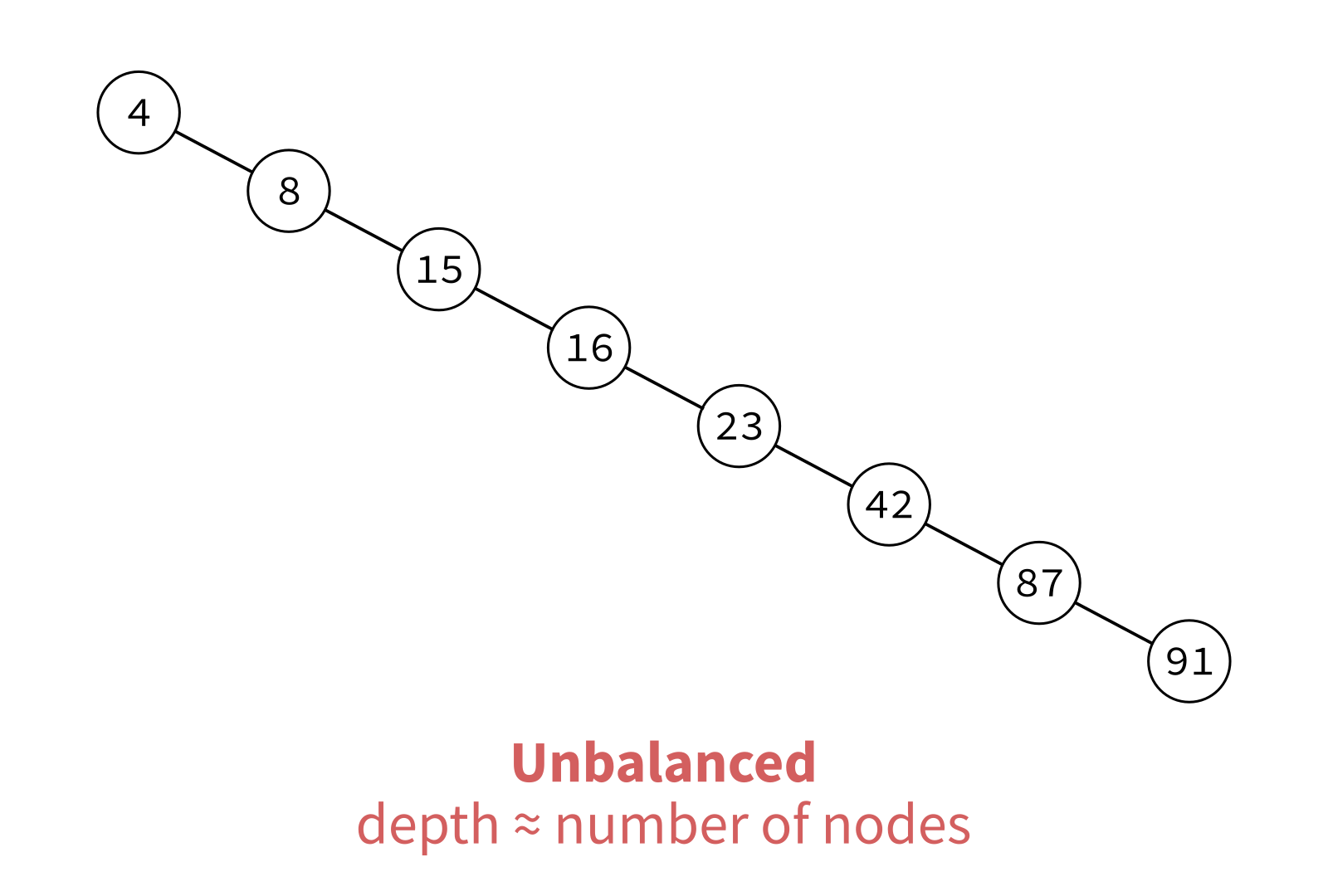
MCS 360 usually covers rebalancing operations.
References
-
In optional course texts:
- Problem Solving with Algorithms and Data Structures using Python by Miller and Ranum, discusses binary trees in Chapter 7.
-
Elsewhere:
- Cormen, Leiserson, Rivest, and Stein discusses graph theory and trees in Appendices B.4 and B.5, and binary search trees in Chapter 12.
Revision history
- 2022-02-28 Last year's lecture on this topic finalized
- 2023-02-23 Updated for 2023